Joint Statement: Milestone for trans and intersex rights in Europe
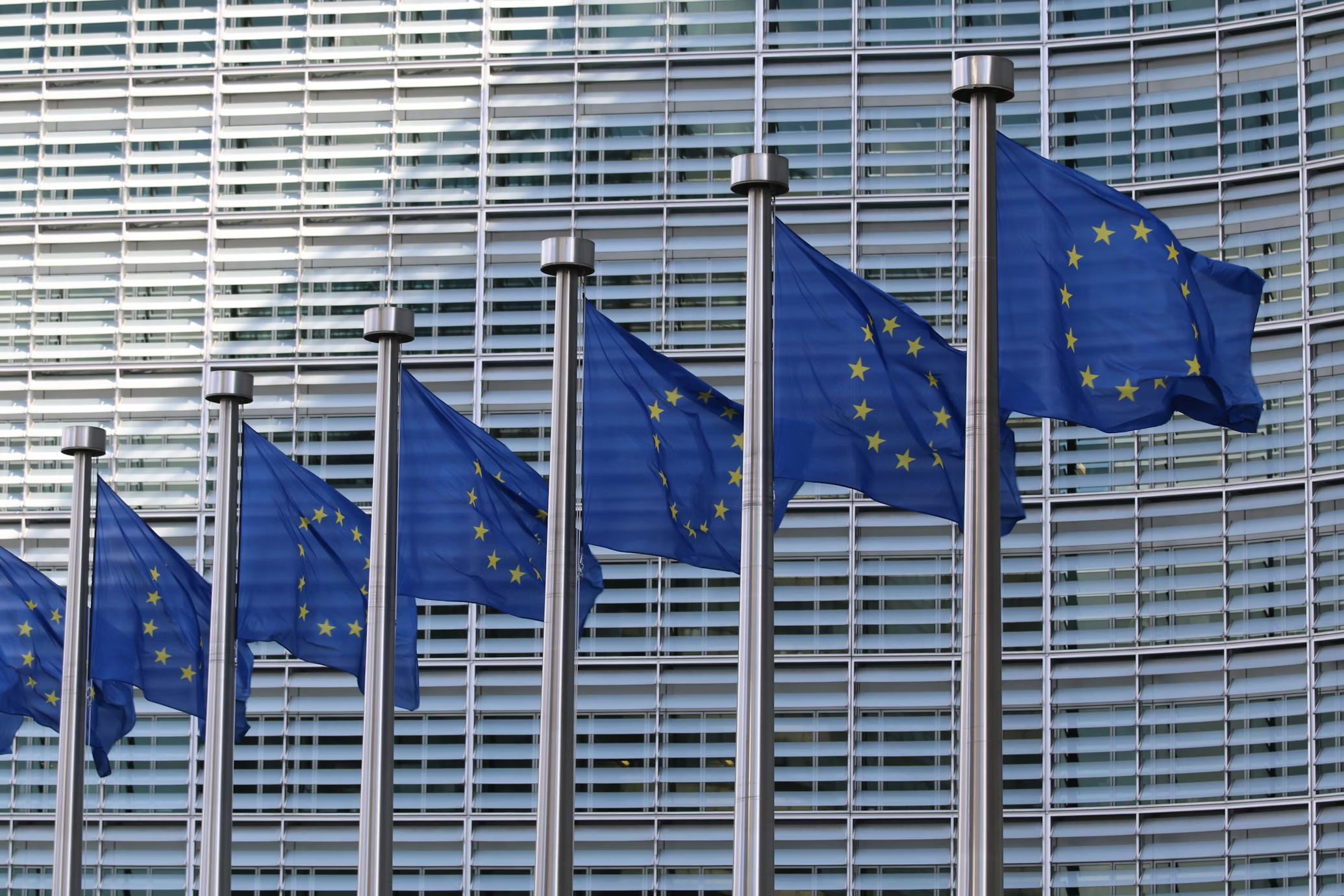
ILGA-Europe, TGEU, OII Europe, IGLYO and EL*C jointly welcome the inclusion of SOGIGESC grounds in new EU Directive on minimum standards for equality bodies
On 7 May 2024, two new directives on minimum standards for equality bodies were officially adopted by the EU. One of the directives includes in its recitals and articles the grounds of gender expression, gender identity and sex characteristics in addition to sexual orientation. This marks the first time sex characteristics have been mentioned explicitly in an EU directive, and the second time gender identity and gender expression have been mentioned in an EU directive.1 This is an important milestone for the protection of LGBTI people in EU legislation, and follows two years of joint advocacy on these directives by OII Europe, TGEU, ILGA-Europe, EL*C and IGLYO.
The two new directives amend existing EU laws in order to add provisions to strengthen the role and independence of equality bodies in the EU, setting minimum standards regarding their mandates, tasks, independence, structure, powers, accessibility and resources. Both directives are subject to EU primary law including the Treaties and the Charter of Fundamental Rights (CFR). Article 19 TFEU and Article 21 CFR include sexual orientation in the list of protected grounds against discrimination, therefore both new directives cover the grounds of sexual orientation as regards the mandates of equality bodies in the EU.
However, we need to go beyond this to properly address the reality of discrimination. Limiting equality bodies’ mandates to working only on the grounds of discrimination explicitly named in the EU treaties means that many causes of discrimination are left out, remaining unrecognised and therefore not properly addressed. In the case of LGBTI people, who face discrimination based on their sexual orientation, gender identity, gender expression or sex characteristics (or a combination of these grounds), not including gender identity, gender expression and sex characteristics in the mandates of equality bodies means that equality bodies cannot properly address discrimination faced by trans and intersex people. In a time when discrimination against LGBTI people is on the rise, this is a welcome move.
Together, OII Europe, TGEU, ILGA-Europe, EL*C and IGLYO advocated for references to the grounds of gender expression, gender identity and sex characteristics to be included in both new directives.
Directive 2022/0401 amends directives in the field of equal treatment between persons irrespective of their racial or ethnic origin, equal treatment in matters of employment and occupation between persons irrespective of their religion or belief, disability, age or sexual orientation, equal treatment between women and men in matters of social security and the access to and supply of goods and services. This new directive required unanimous agreement in the EU Council. Despite references to gender identity, gender expression and sex characteristics being included in the text proposed by the European Parliament, due to opposition from a small number of EU countries, these references did not make it into the final text.
However, for the second Directive, the references did make it into the final agreed text. Directive 2022/0400 amends existing Directives 2006/54/EC and 2010/41/EU which cover the implementation of the principle of equal opportunities and equal treatment of men and women in matters of employment and occupation, including self-employment. This directive required qualified majority voting in the EU Council. Therefore, the references to the grounds of gender identity, gender expression and sex characteristics were included in the adopted text, in the context of the definition of a victim of discrimination:
Recital 23
“In addition to prevention, a central task of equality bodies is to provide assistance to victims of discrimination. Victims should be understood to encompass all persons who consider that they have experienced discrimination as referred to in Article 4 of Directive 2006/54/EC or in Article 4 of Directive 2010/41/EU, irrespective, for example, of their socio-economic status, political opinion, age, health, nationality, residence status, language, colour, level of literacy, gender, gender identity, gender expression or sex characteristics.”
Article 6
“Member States shall ensure that equality bodies are able to provide assistance to victims as set out in paragraphs 2 to 4. For the purposes of this Directive, ‘victims’ mean all persons, irrespective, for example, of their socio-economic status, political opinion, age, health, nationality, residence status, language, colour, level of literacy, gender, gender identity, gender expression or sex characteristics, who consider that they have experienced discrimination within the meaning of Article 4 of Directive 2006/54/EC or Article 4 of Directive 2010/41/EU.”
What’s next?
This achievement marks a milestone in the recognition of trans and intersex people in EU legislation and policy-making, and will contribute to further protection against discrimination for LGBTI people by equality bodies across the EU. We also extend our thanks to Equinet, the European Network of Equality Bodies, which led a successful campaign on these directives and supported our calls for the inclusion of the grounds of gender identity, gender expression and sex characteristics, based on the reality of discrimination against LGBTI people in the EU, as well as existing EU policy, legislation, and decisions of the EU Court of Justice. We will now work together with relevant authorities on the effective transposition of the equality bodies directives and we will continue to advocate for more comprehensive protection for LGBTI people in EU policy and legislation.
Intersections: The LGBTI II Survey – Homelessness Analysis
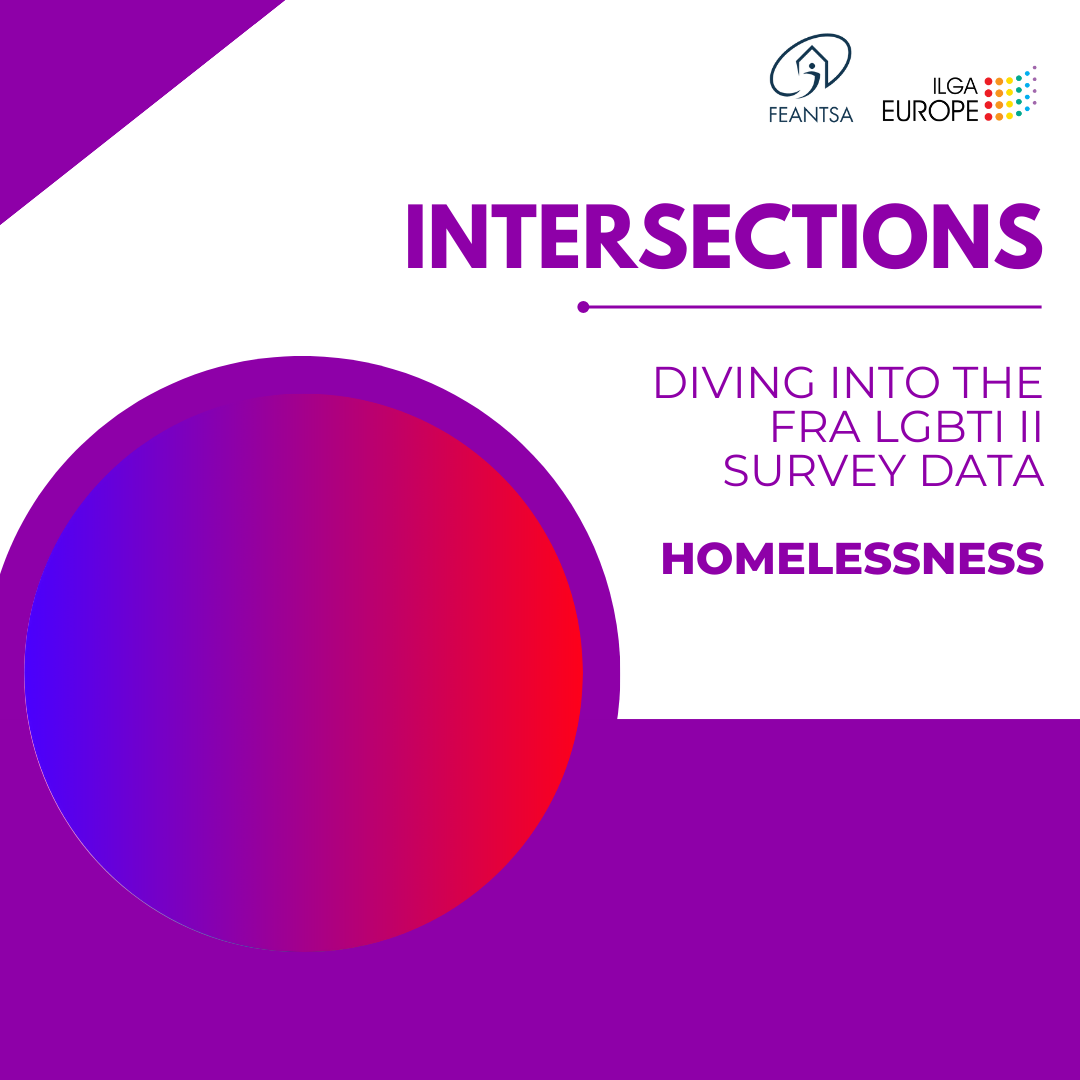
Disaggregated data, which can look deeply into the lived experiences of marginalised people, is a key demand of LGBTI and other human rights groups. With this in mind, over the last year ILGA-Europe have been partnering with a variety of NGOs in the region to analyse the FRA 2019 LGBTI Survey II data and pull out experiences of those experiencing intersectional marginalisation. This work is based on analysis co-commissioned by ILGA-Europe and TGEU.
This briefing analyses the results of the FRA LGBTI Survey II and summarises the relevant data about experiences of homelessness among the LGBTI community.
Statement on today’s vote to ban legal gender recognition in Russia
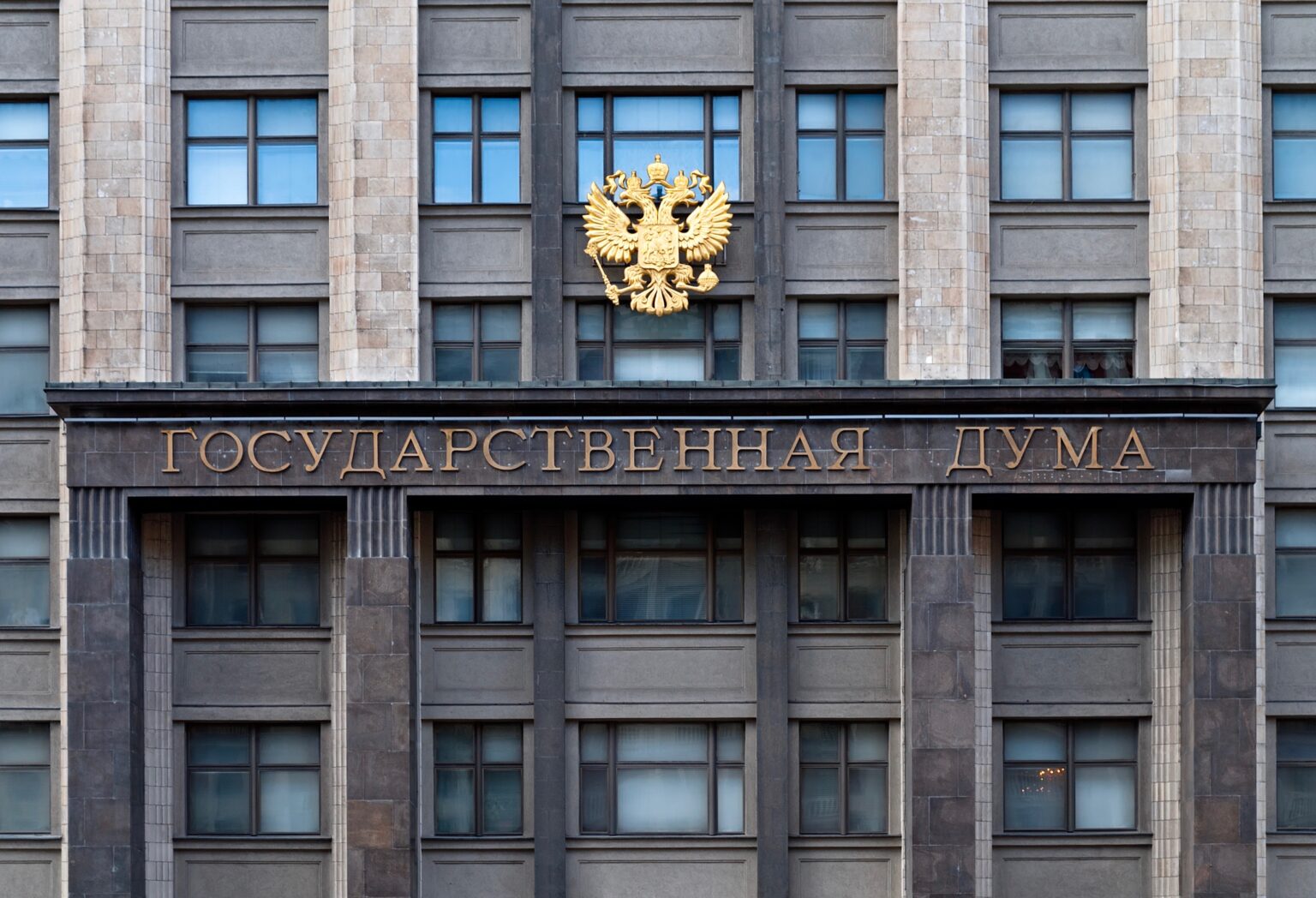
ILGA-Europe issue this public statement to express our support to and solidarity with trans and gender diverse people in Russia in the light of the recent legislative developments that severely infringe upon their human rights.
A proposed bill, passed in the third reading at the Russian Duma on July 14[1], introduces a comprehensive ban on trans-specific healthcare and legal gender recognition, effectively limiting individuals’ autonomy over their own bodies and identities.
We firmly assert that such legislation flagrantly violates fundamental human rights standards and principles.
ILGA-Europe firmly believe in the inherent dignity and equal rights of all individuals, regardless of their gender identity or expression. International human rights standards, including the Universal Declaration of Human Rights, emphasise that everyone has the right to self-determination, privacy, and the highest attainable standard of physical and mental health. Denying trans and gender diverse individuals access to trans-specific healthcare and legal gender recognition blatantly disregards the international human rights framework.
We stand in solidarity with the trans and gender diverse community in Russia, whose rights and wellbeing are under attack. The denial of trans-specific healthcare, including hormone therapy and surgeries, not only disregards the human rights of trans and gender diverse people but also perpetuates discrimination, stigmatisation, and marginalisation. It is essential to recognise that trans-specific healthcare is a critical component of comprehensive healthcare, promoting the well-being, mental health, and social integration of trans and gender diverse people.
Furthermore, the bill invalidates all certificates of legal gender recognition for individuals who have undergone transition-related surgery but not yet changed the gender marker in their passport. This is a violation of their right to privacy, places trans people in legal limbo, and creates unnecessary burdens on trans people, forcing them to disclose their private and medical history and exposing them to discrimination, harassment and violence.
Additionally, the prohibition on adoption and guardianship for trans and gender diverse people is a denial of their right to form a family and care for children in need. This discriminatory provision perpetuates harmful stereotypes and prejudices against trans and gender diverse parents.
This bill not only violates the rights of trans and gender-diverse people but also raises concerns about the wellbeing and bodily autonomy of intersex children and people, particularly in relation to intersex genital mutilation. International human rights bodies have repeatedly classified non-vital or cosmetic medical interventions against intersex infants and children without the child’s full personal, informed consent, otherwise known as “intersex genital mutilation” or “IGM”, as constituting cruel, inhuman, or degrading treatment or harmful practices. These practices violate the principles of bodily autonomy, non-discrimination, and the best interests of the child. They have been recognised as human rights violations that require urgent action and protection for intersex people.
The bill will now be voted in the Federation Council on July 19 and then needs to be signed by the President to come into force.
We stand united and in solidarity with our allies and partner organisations in demanding justice, equality, and dignity for trans, gender-diverse and intersex people in Russia. We will continue to advocate tirelessly for the full recognition of their human rights, including bodily autonomy, access to comprehensive healthcare, legal gender recognition based on self-determination, and the right to form families of trans and gender diverse people in Russia.
[1] http://duma.gov.ru/news/57524/
Intersex people are among the most vulnerable among the LGBTI population, study finds
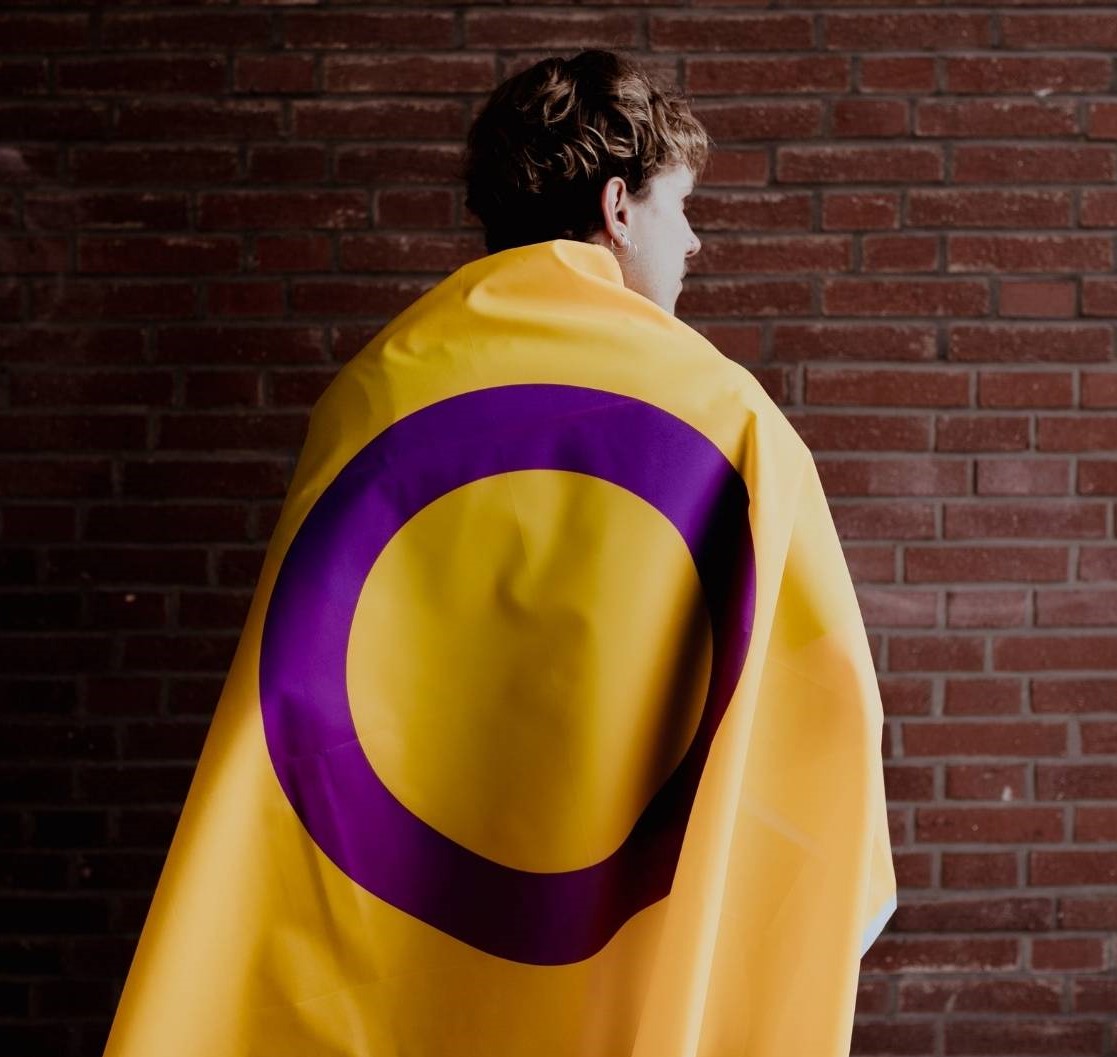
A new report from ILGA-Europe in association with OII Europe finds that Intersex people experience some of the highest levels of discrimination and marginalisation of all groups surveyed in the most recent cross-European LGBTI study.
For our latest Intersections briefing, we have partnered with OII-Europe to look deeply into the lived experiences of intersex people across Europe, by disaggregating the responses of intersex people to the 2019 FRA LGBTI Survey II.
For readers who have not crossed paths with this survey before, in 2019, FRA (EU Agency for Fundamental Rights), conducted the second round of the LGBTI Survey which shows how LGBTI people experience their fundamental rights in daily life across Europe and remains the largest survey of its kind to date. For the first time, the survey included the experiences of intersex people and determined that intersex people experience some of the highest levels of discrimination and marginalisation across all groups included in the study.
The key findings
Intersex people are among the most vulnerable groups within the LGBTI population. The survey showed that intersex respondents reported lower levels of life satisfaction and much higher difficulties in making ends meet and housing difficulties. Respondents also reported higher levels of discrimination, as well as distrust in authorities and not knowing how to report discrimination. Finally, they also reported experiencing much higher obstacles to healthcare and higher exposure to physical and, especially, sexual attacks.
Intersex people from marginalised groups are at even higher risk. When your identity is at the intersection of vulnerable grounds, you are exposed to particular forms of discrimination. For example, in this briefing, we found that intersex respondents from ethnic minorities (including of migrant backgrounds) were more likely to experience homelessness and to avoid healthcare services. Trans intersex women were disproportionately exposed to discrimination when looking for work. Non-binary intersex respondents were more likely to feel discriminated against by school or university personnel and intersex people with disabilities reported a dramatically higher incidence of harassment.
Intersex people are subjected to non-vital medical interventions without their informed consent. Nearly two thirds of intersex respondents who were subjected to surgeries did not personally consent to the first decisions about their own bodies, stating that their “parents or someone else” or “no one” gave consent to their first treatment or intervention. This highlights the urgent need for education and training on intersex people’s needs and rights for all medical professionals. Many of these interventions are irreversible and have serious and lifelong consequences for the person.
This report finds that intersex people face significant vulnerability and some of the highest levels of discrimination. We will continue to call on governments and international bodies to ban non-vital medical interventions on intersex people without their informed consent, so the bodily integrity of intersex people is protected, which is their fundamental right.
You can check out the full briefing on intersex people here and previous Intersections reports on older people, youth, and lesbians.
Intersections: The LGBTI II Survey – Intersex Analysis
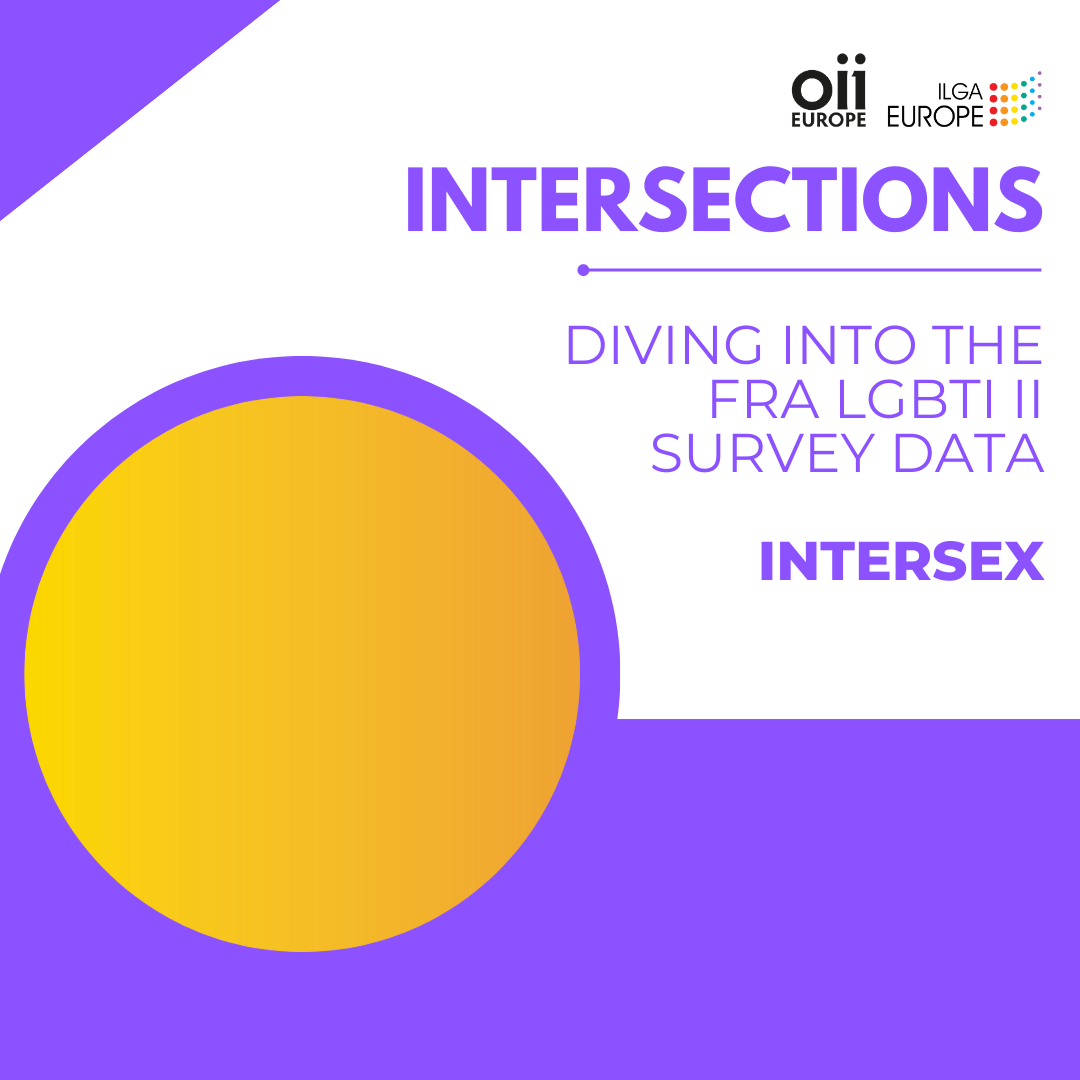
Disaggregated data, which can look deeply into the lived experiences of marginalised people, is a key demand of LGBTI and other human rights groups. With this in mind, over the last year ILGA-Europe have been partnering with a variety of NGOs in the region to analyse the FRA 2019 LGBTI Survey II data and pull out experiences of those experiencing intersectional marginalisation. This work is based on analysis co-commissioned by ILGA-Europe and TGEU.
This briefing on intersex people summarises the findings of data analysis disaggregating the responses of intersex people from the responses provided by all LGBTI respondents to the 2019 FRA LGBTI Survey II, in order to show the differences in their lived experiences.
In 2019, FRA conducted the second round of the LGBTI Survey which shows how LGBTI
people experience their fundamental rights in daily life across Europe. For the first time, the survey included the experiences of intersex people, and determined that intersex people experience some of the highest levels of discrimination across all groups included in the study.
This briefing on intersex people was developed collaboratively with OII Europe.
Call to criminalise intersex genital mutilation in the EU
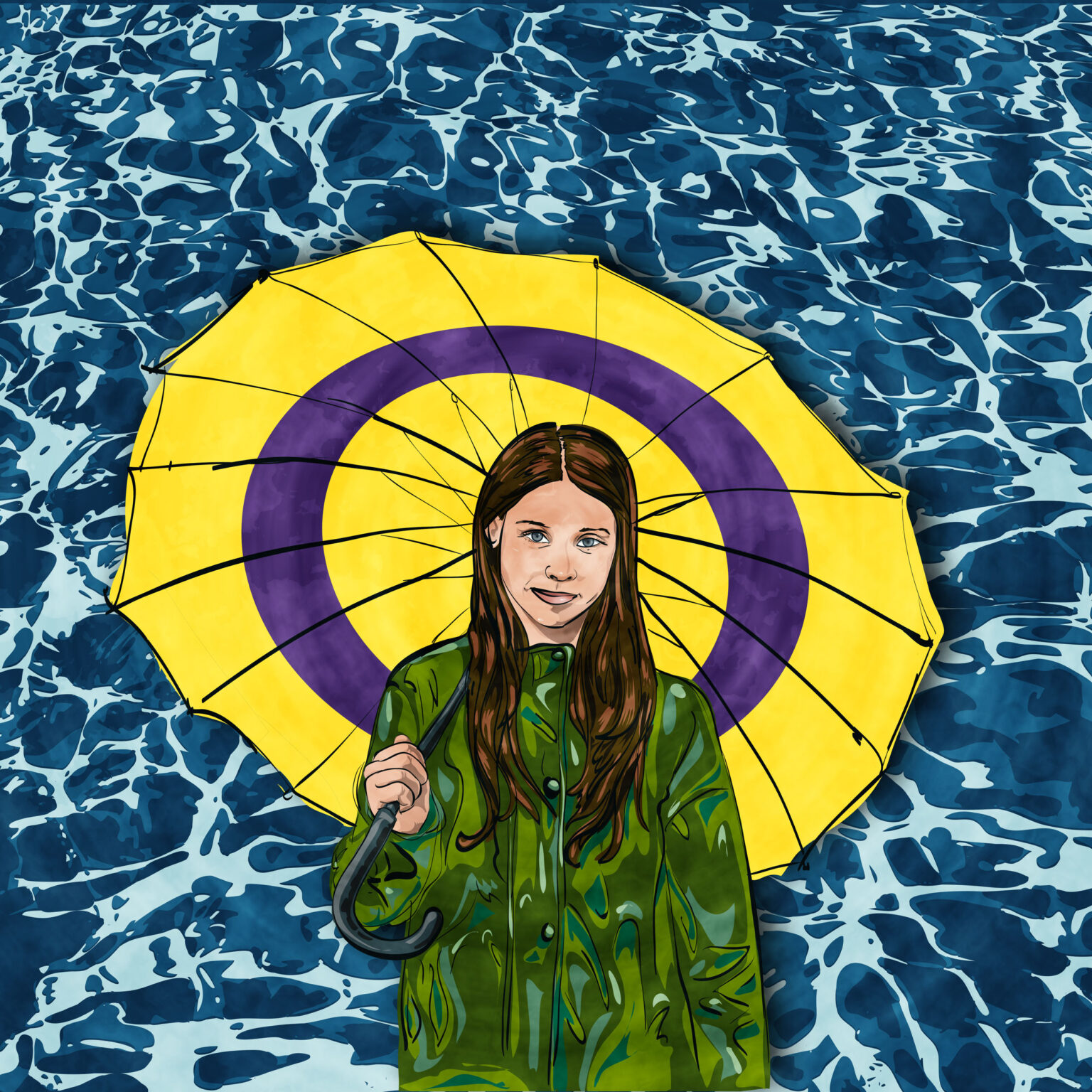
ILGA-Europe are calling on the EU co-legislators to take a strong stance against intersex genital mutilation as a form of violence against intersex women and girls
ILGA-Europe are urging the EU to criminalise the practice of IGM against intersex people, particularly intersex women and girls, as part of the proposal for a Directive combatting violence against women and domestic violence.
This call to action stems from the fact that IGM is a harmful practice that violates the human rights of intersex individuals. It is a non-vital or cosmetic medical intervention performed on intersex infants and children without their full, prior, personal, informed consent. International human rights bodies have repeatedly classified IGM as cruel, inhuman, or degrading treatment, or harmful practices[1].
IGM is often performed on intersex women and girls with the aim of creating bodies that are capable of heterosexual penetrative sex, frequently long before the individual has the opportunity to express either a gender identity or sexual orientation. This presumption that intersex women and girls will need bodies that look and function in the same way as the bodies of heterosexual endosex[2] women and girls is enforced without the individuals’ consent, frequently irreversibly.
Procedures and treatments performed on intersex infants and children assigned female, such as labiaplasties, vaginoplasties, clitoral “recession” and other forms of clitoral cutting or removal, and gonadectomies, are specifically based on misogynistic beliefs and are aimed at exerting control over their physical appearance and sexuality, which is a form of violence against intersex women and girls.
Moreover, intersex women and girls can also experience “corrective rape” in similar ways to LBT women, because of their physical appearance, which can lead to targeting by perpetrators who believe they do not look “female enough.” Rape of intersex persons inside families or by relatives can take the form of punishment, especially in families where the existence of the intersex family member is considered shameful for the family.
The criminalisation of intersex genital mutilation is an important step towards protecting the rights and well-being of intersex individuals, particularly intersex women and girls, who are disproportionately affected by this harmful practice.
- By criminalising IGM, the EU would send a strong message that this practice is not acceptable and will not be tolerated.
- It would provide a legal framework for prosecuting those who perform these procedures, as well as those who facilitate or encourage them.
- It would help to hold accountable medical practitioners who perform IGM, as well as parents or guardians who consent to the procedure.
- Criminalising IGM would also help to raise awareness about the harms of this practice and promote a broader understanding of the rights and experiences of intersex individuals.
- It would demonstrate the EU’s commitment to upholding the rights of all individuals, regardless of their sex characteristics.
Incorporating criminalisation of IGM into the proposed directive combatting violence against women and domestic violence is a logical step, as IGM is a form of violence against women and girls. It is consistent with the broader goals of the directive, which seeks to prevent and combat violence against women and girls in all their diversity, and to promote gender equality.
Overall, criminalising IGM is vital to protecting the rights and well-being of intersex individuals and promoting a more inclusive and just society.
[1] E.g. CAT/C/AUT/CO/6, CAT/C/DEU/CO/5, CCPR/C/AUS/CO/6, CRC/C/GBR/CO/5, CEDAW/C/CHL/CO/7
[2] Endosex, or diadic, are terms that refer to non-intersex people, or people who do not have variations of their sex characteristics.
The Frontline: Trans Inclusion in the Women’s Movement

In this episode of The Frontline, specially released on Trans Day of Visibility, we’re looking at trans inclusion in the women’s movement. All too often we hear about exclusionary forces, or the voices of forces who seek to exclude trans women from the women’s movement, but does this adequately represent the truth?
We ask what it means for feminism to be inclusive in practical terms and how does inclusiveness impact the work? We explore how inclusionary women’s rights organisations and trans activists are responding to the efforts of exclusionary actors to narrow the frame for feminism, and the lessons learned so far.
With us to investigate exclusionary narrative and look at it from the more prevalent inclusionary perspective, are Caroline Hickson, Regional Director of International Planned Parenthood Federation European Network; Tanya von Knorring, Executive Director of Transfeminiinit, Finland and Federal Vice Chair of National LGBTI Finland; and Marion Böker from the German NGO, Deutsche Frauenring, who is also on the board of the International Alliance of Women and the European Women’s Lobby.
For good and bad: The trending impacts on LGBTI human rights in Europe and Central Asia
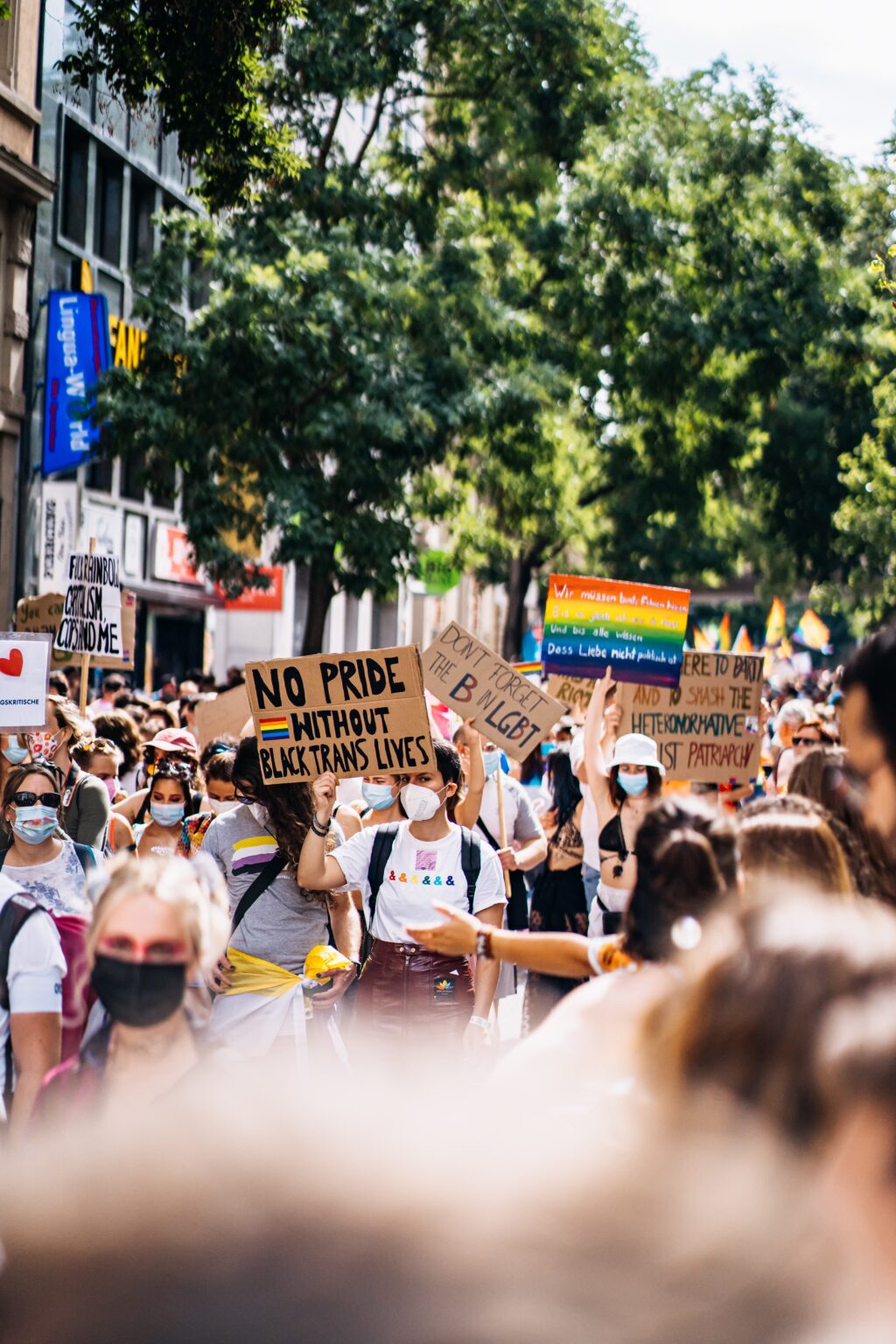
The most striking finding of ILGA-Europe’s Annual Review 2023 is a stark rise in the ferocity of anti-LGBTI hate and violence reported in Europe and Central Asia. But alongside this worrying trend, there are positive developments in areas such as legal gender recognition, public support, intersex human rights and civil society. Here are the key highlights.
At ILGA-Europe we’ve just published our Annual Review, showcasing the main developments and trends in the human rights Situation for LGBTI people in Europe and Central Asia. Disturbingly, the most striking finding this year is the levels of hate reported in the region. 12 years into this yearly reporting, the present edition finds that anti-LGBTI violence in 2022 was more targeted and extreme than ever in the history of our reporting.
Our Annual Review aims to paint a clear picture of the reality from the ground for our communities. It documents individual cases and events, as well as legislative, social and political advancements and regressions, and new available data. All reporting is based on the work of LGBTI activists in each country featured in these pages, as well as on our own work.
While the review points to the devastating consequences of the instrumentalisation of LGBTI people, mostly for political gain, there have been other developments in the direction of human rights and protection of LGBTI people.
We have not seen this severity of the violence before
For years, ILGA-Europe has been documenting the rise in hate while activists across the region have shown how anti-LGBTI speech, both online and by political and religious leaders, translates into violence harming people.
This phenomenon is across the board in this year’s Annual Review. For example, in France, the Ministry of Interior reported a 28% rise in hate crimes between 2020 and 2021. In Switzerland, LGBTI organisations reported a 50% increase between 2020 and 2021. Spain reported a 68% increase in 2021, while in England and Wales transphobic incidents rose by 56%.
There are also more reports than ever before of LGBTI people taking their lives, a clear sign how discrimination, hate speech and harassment are impacting mental health. In Italy, three trans women took their lives. Two of them were teenagers, the third woman was a teacher, who was suspended from school because she had socially transitioned. In Armenia, a young gay couple committed suicide after suffering harassment when a photo of them kissing went viral. These are just a few examples.
Sexual education is increasingly compromised
Education is a growing battleground in the resistance to LGBTI people and rights. In Hungary, as result of law banning LGBT content, teachers reported a fear of bringing sexual orientation, gender identity and other topics to the classrooms. In the Netherlands, 36 orthodox schools require anti-LGBTI declarations from pupils and parents, and the new Italian Prime Minister, Giorgia Meloni has publicly advocated for a ban on sex education in schools and the exclusion of LGBT people in children’s books.
Russia expanded its ‘propaganda law’ to prohibit positive and neutral information about LGBT people and “gender reassignment” to minors and adults. There was an alarming number of ‘propaganda’ charges or threats in educational establishments in the country. All in all, progression on sexual education is being challenged.
Public support for LGBTI people is growing
In parallel, the report finds growing support among societies for LGBTI people, also in countries where we might not expect it. For example, most Hungarians don’t consider ‘homosexual propaganda’ an important issue. In Poland, two thirds of the population support marriage equality and 60% support the abolition of anti-LGBT resolutions in the country.
What’s more, many politicians across Europe have shown their support throughout 2022. Many reacted with horror to the killings in Oslo and Bratislava and the European Parliament has publicly condemned the violations of LGBTI rights. We need more governments standing strong against hate in the media and online and more progress in advancing laws against hate crimes that protect LGBTI people.
There are more legal gender recognition laws that include self-determination
In the face of enormous backlash on trans people, and a number of forces trying to stop legal gender recognition (LGR), some countries made progress in 2022 and others showed a will to ensure a model of LGR based on self-determination.
Scotland, Finland and Spain were the best examples; by adopting LGR laws that include self-determination, these countries are showing a clear way forward for other governments.
Same-sex partnership is back on the agenda
After stagnating for a number of years, same-sex partnership recognition is on the rise again. Andorra adopted legislation to ensure heterosexual marriage and the recognition of same-sex civil partnerships guarantee the same set of rights. In Latvia, following a Supreme court decision ruling that same-sex couples should be given civil status, same-sex couples were recognised in court cases. Slovenia and Switzerland adopted marriage equality, including positive changes regarding adoption rights. Other countries took steps forward the adoption of laws that recognise same-sex partnerships.
While intersex human rights are rightfully taking a space in the agenda
There is also a growing awareness of intersex human rights across Europe. While Greece adopted a ban on non-vital medical interventions on children, the European Commission conducted surveys and interviews for the first EU study on the lives of intersex people and their parents (expected to be published this summer). The Council of Europe is preparing a Recommendation on intersex human rights while the Chair of European Commission against Racism and Intolerance and PACE General Rapporteur for the rights of LGBTI people shared supportive statements.
Behind every positive development, there are LGBTI activists doing hard work
LGBTI organisations and activists across our region are key to all the advances on LGBTI people’s rights and the support to their communities during 2022.
Despite difficult circumstances, more and more Prides are being organised, support for the most vulnerable in the community is provided and work with institutions and policy makers continues advancing LGBTI people rights.
More and more organisations report covering for gaps in service provision, and providing services where the community does not feel safe to access mainstreaming services, for example when it comes to shelter.
The most remarkable support was that of the LGBTI community in Ukraine through LGBTI organisations, as well as the support by activists across Europe for Ukrainian LGBTI refugees.
LGBTI activists are the central players in countries where progress has been made, as we’ve seen in Spain and Finland, where huge effort went into successfully keeping self-determined legal gender recognition on the right political track, despite fierce opposition.
The Annual Review of the Human Rights Situation of LGBTI People in Europe and Central Asia is published every February, as part of our Rainbow Europe package. We thank all those across 54 countries who worked with us to make sure our reporting was accurate.
Find out what’s been happening in your country here.
How activism led the way forward to protect intersex children in Greece
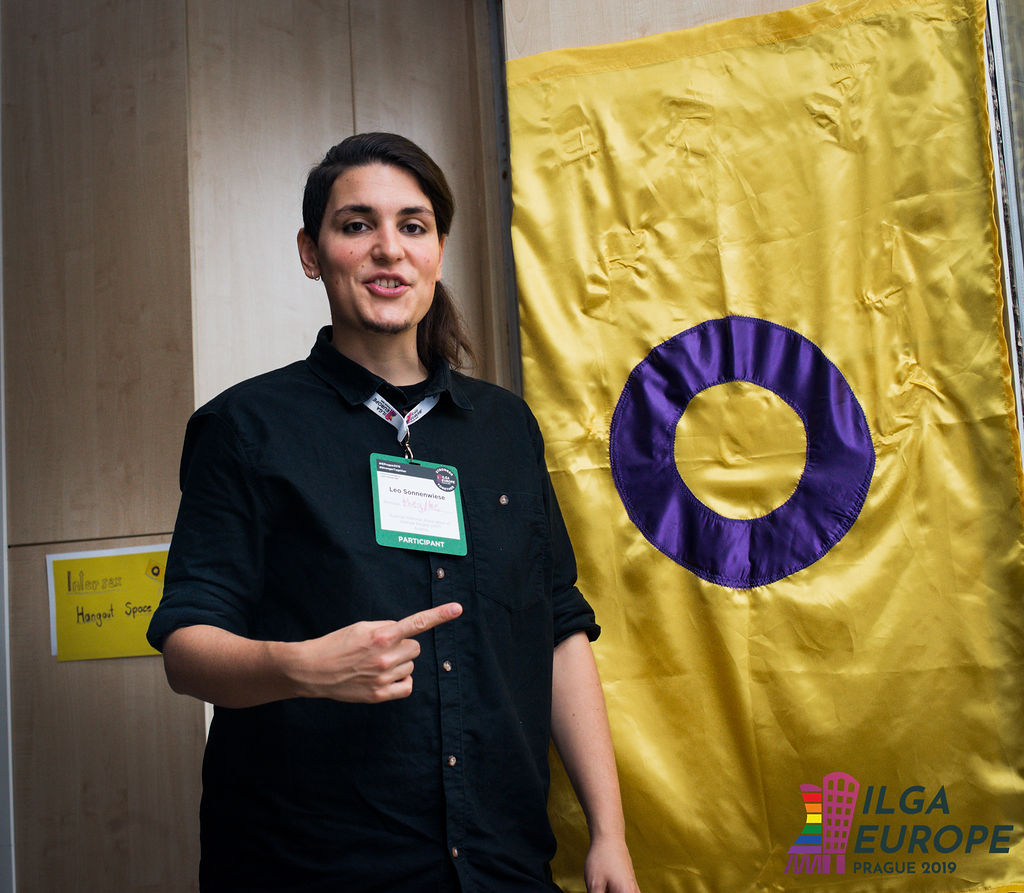
To mark #IntersexAwarenessWeeks we look into the efforts and experiences of activists in Greece, who worked for many months alongside the national government, resulting in the country becoming just the fifth in the world to ban intersex genital mutilations on children.
July 19 was a historic day as Greece became the fifth country on the planet to ban genital mutilations on intersex children. Intersex minors under the age of 15, living in Greece, are now protected from surgical operations and other invasive treatments aimed to align their sex characteristics to binary male or female categories.
These unnecessary, non-consensual and abusive interventions have already been banned in four EU countries, Germany, Iceland, Malta, Portugal, and in some regions of Spain. Now Greece has joined these countries in the protection of the bodily integrity of intersex people, a human right that the United Nations, the Council of Europe and the European Union have been calling for for a long time.
How did this happen?
The advocacy work of Intersex Greece has been crucial in bringing this forward thinking legislative change about. During our Annual Conference in Sofia, Nikoletta Pikramenou and Eleni Pateraki, from the organisation, shared their journey towards this historical win.
It all began in 2021 when the Greek government formed a National Committee to design the National Strategic Plan on LGBTQI+ Equality. Intersex Greece submitted a report on the situation of intersex rights. Thanks to this work, the National Plan included, for the first time, a separate section with intersex people’s demands.
Over the course of the following year, Intersex Greece became a registered organisation as well as an ILGA-Europe grantee. They relied on OII-Europe for guidance and attended meetings with the government and the Ministry of Health. LGBT organisations in the country gave interviews to the media and built relations with political representatives.
Intersex Greece worked as a team to best represent the intersex community. While their advocacy strategy relied on the power of personal stories, they made sure no individual felt pressured to come out as intersex.
A week before the vote, Irene Simeonidou, Secretary of Intersex Greece and mother of an intersex child, shared her story with the Greek Parliament. “13 years ago, when I was five months pregnant, two obstetricians at the local hospital suggested, very insistently, that we must terminate the healthy and desirable baby I was carrying because it had an extra X on the sex chromosome,” Irene said. Her testimony shook members of the parliament.
Finally, on 19 July, the bill was voted in and became a law.
In the lead-up to this historic moment, the Intersex Greece team encountered obstacles, due to their limited staff and resources, the emotional stress, and the difficulties of keeping a balance between voluntary activism and their personal and professional lives.
“Our struggles don’t end here. We are here, we are real, we are together,” they remind us in relation to the recent bill.
Hate against intersex people in Greece
Supported by ILGA-Europe, Intersex Greece conducted the first study on hate against intersex people in Greece earlier this year. The conclusions show that negative attitudes towards intersex people prevail in the country, and as a result the implementation of the legislation will be extremely challenging. You can learn more about this research in this moving video developed by Intersex Greece.
Shortcomings in intersex people’s rights in the EU
This year at ILGA-Europe we introduced an Intersex Bodily Integrity category in our Rainbow Map, expanding our assessment of this legislative area from 1 criterion to 4. This is because the introduction of bans in an increasing number of states has helped to clarify the key components in those bans; the new criteria lay out not only the demand that a ban be in place, but also what components the ban should include to meet a minimum standard of human rights protection and effectiveness.
In these countries and territories that receive points on the Rainbow Map, medical practitioners or other professionals are prohibited by law from conducting any kind of surgical or medical intervention on an intersex minor when the intervention has no medical necessity and can be avoided or postponed until the person can provide informed consent. However, in all cases, these bans have serious shortcomings, including that they include exceptions for certain conditions and do not provide universal protection.
The ban in IGM in Greece, is unique, in that in addition to banning surgical interventions, it also bans hormonal interventions that target intersex children – a key demand of intersex human rights organisations.
The work of Intersex Greece and other LGBTI activists in Greece is cut out now to have this legislation fully implemented. And the work of LGBTI activists across the European region is to push governments and policy makers to introduce and shore-up existing legislation to fully respect and protect the human rights of intersex people.
Intersex people exist in every country in the world. These Intersex Awareness Weeks, we reiterate that full autonomy over their own bodies from birth onwards is an inalienable human right for intersex people, and that like every individual, they deserve to live freely, safely and equally in our societies.
Children born intersex are at risk in most European countries. Here’s why
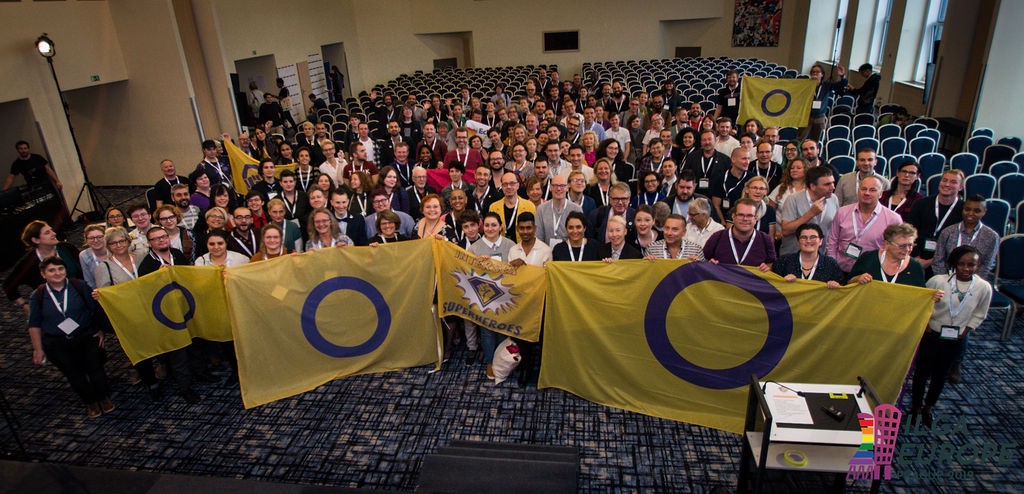
ILGA-Europe’s Rainbow Map of the legal situation for LGBTI people in Europe has a brand-new category: Intersex Bodily Integrity. It’s an essential expansion, because in across Europe and Central Asia, intersex people, and especially children, are still at risk.
In a world where the overwhelming majority of people and governments have limited or no understanding of variations of sex characteristics, the existence of intersex people and their bodies is barely recognised. But intersex people, that is people who are born with a reproductive or sexual anatomy different from what society expects of women or men’s bodies, make up around 1.7% of the population, which is comparable to the number of people born with red hair.
Because of this lack of understanding and acceptance, healthy intersex bodies are considered to be a medical problem that needs to be fixed by surgical, hormonal, other medical and sometimes psychological means. Intersex people face human rights violations, including having their bodily integrity compromised as infants, when doctors decide to ‘fix’ them.
Published in May 2022, ILGA-Europe’s Rainbow Map and Index annually ranks 49 European countries on their respective legal and policy practices for LGBTI people. Although ILGA-Europe has been monitoring intersex genital mutilation for some time now, and advocating on behalf of intersex people, this year we’ve introduced an Intersex Bodily Integrity category, expanding the issues that we monitored previously, covering the different issues the heading captures.
The Map finds that only Germany and Iceland have joined Malta, Portugal and some regions in Spain in banning medical interventions on intersex children before they are able to give informed consent. This means that in these countries and territories medical practitioners or other professionals are prohibited by law from conducting any kind of surgical or medical intervention on an intersex minor when the intervention has no medical necessity and can be avoided or postponed until the person can provide informed consent. However, in all cases, these bans have serious shortcomings, including that they include exceptions for certain conditions and do not provide universal protection.
Alongside, ILGA-Europe’s Annual Review of the Human Rights Situation of LGBTI people in Europe and Central Asia, found this year that Austria, Cyprus, Belgium and France have tabled prohibition proposals.
Not one of the 49 countries analysed in the Rainbow Europe Map have been awarded points for the other three criteria under Intersex bodily integrity category: universality of prohibition of medical interventions; existence of effective monitoring mechanisms; and access to justice for victims and reparations. Not even Malta, which occupies the top position on the Rainbow Europe Map for the seventh year in a row, has been awarded points.
However, according to OII Europe, the only intersex-led umbrella organisation working for human rights of intersex people in Europe, there are reasons for hope. “We are observing a growing will among European governments to combat violence against intersex persons”, said Dan Christian Ghattas, Executive Director of OII Europe in the launch of their 2021 Good Practice Map.
Intersex people exist in every country in the region and the world and they must be protected by legislation and policy makers so they can live freely, safely and equally in our societies. If governments take the right steps, the Rainbow Map can look differently for intersex people next year.
Briefing Document: Ukraine war – Medications needed by trans and intersex people
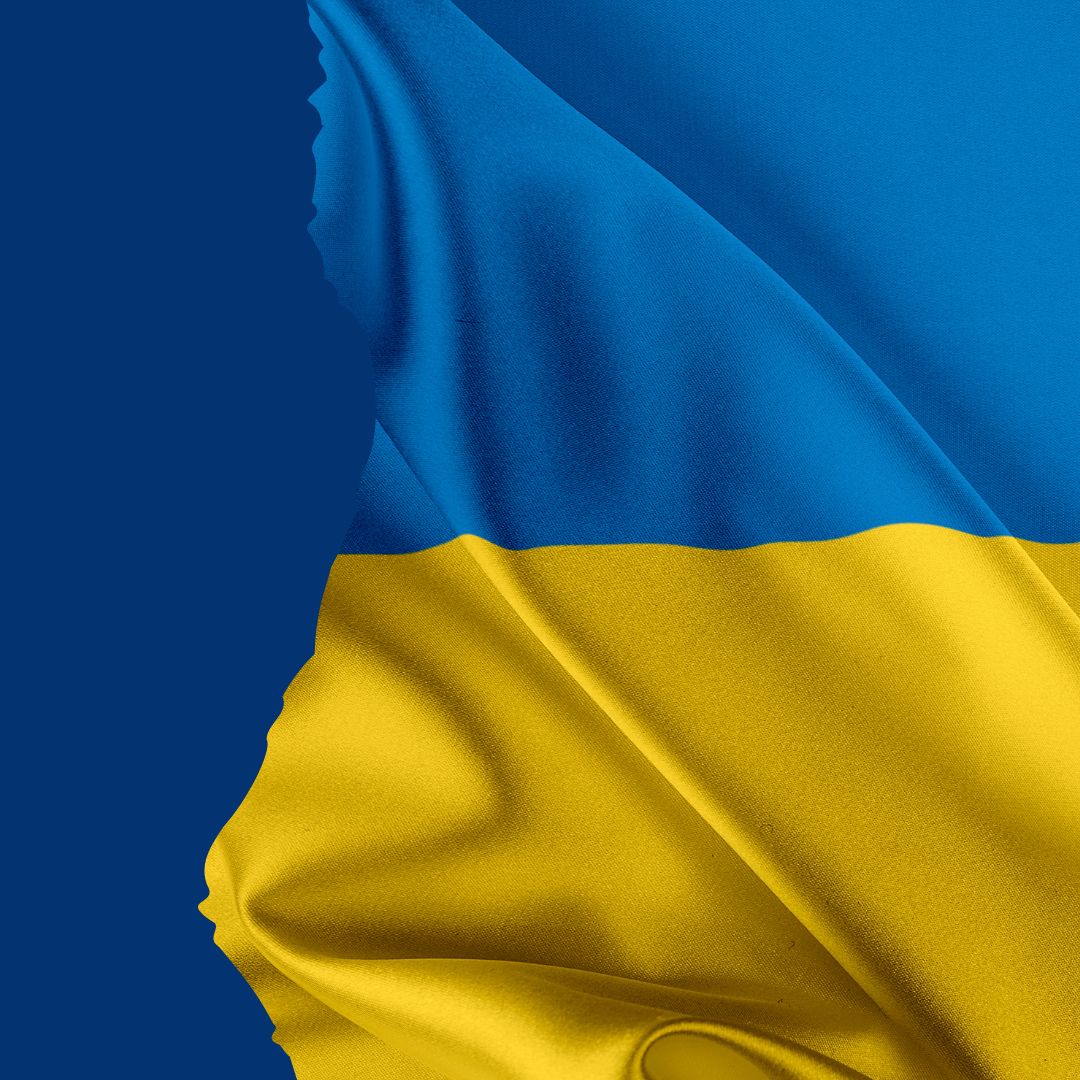
The ongoing crisis in Ukraine has resulted in need for immediate action to address the needs both of a significant population of Ukrainians fleeing the fighting as well as for those who are staying in Ukraine. Within both of these populations, trans and intersex people can be found, and their unique healthcare needs must be taken into account in the humanitarian responses. The purpose of this briefing is to describe the medical needs most common among trans and intersex people, including the medications that they will need, and to document emerging issues in Ukraine and surrounding countries on these issues.
A Marathon, not a sprint: how we’re responding to the invasion of Ukraine
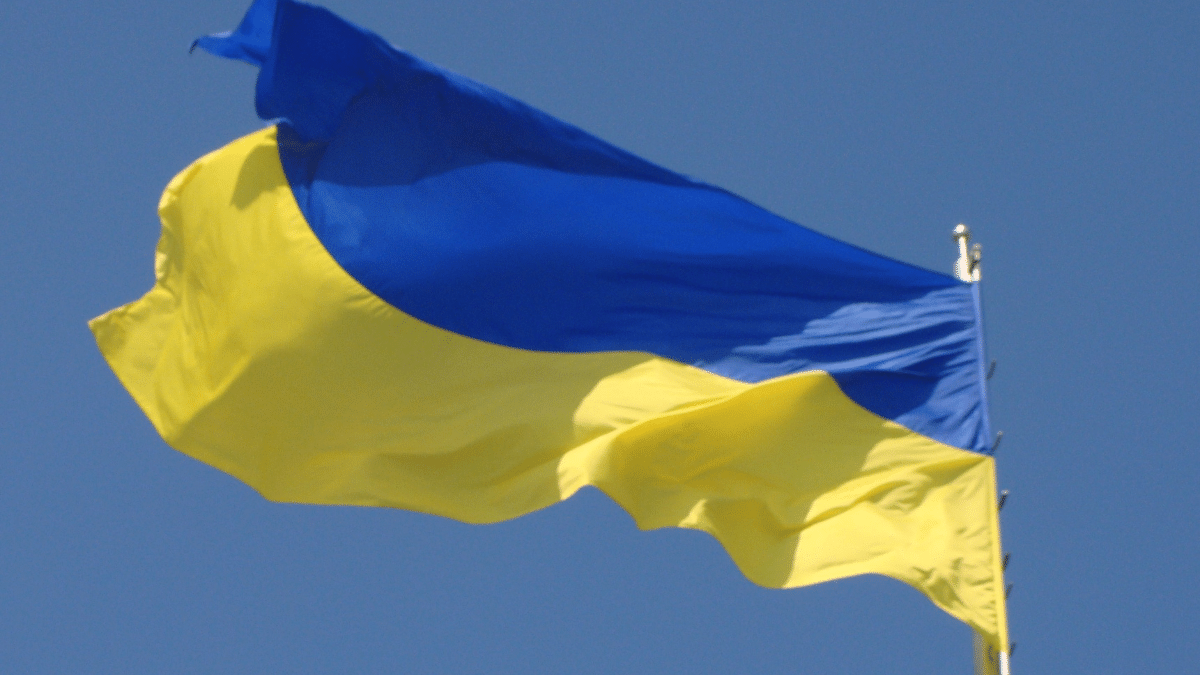
In the past week, since Russia invaded Ukraine on February 24, the global response has been massive, alongside a great number of organisations working with LGBTI communities in the country, and in countries where refugees are landing.
At ILGA-Europe, we’re working to immediately help vulnerable people, but we’re looking towards the long-run too.
As the war in Ukraine has become the focal point of the world, there is a rush to help people and organisations in the country, and rightly so. As many staying in Ukraine seek safety and survival support, while a million and counting continue to cross borders into neighbouring countries and chances for people to leave become slimmer by the day, an immediate humanitarian response is absolutely necessary
At ILGA-Europe we have been working in this respect, helping people on the ground as best we can through our connections with LGBTI organisations, but we recognise that this is not going to be a short-term situation for vulnerable people in Ukraine, Russia and neighbouring countries.
We recognise that this is a marathon, not a sprint, and that efforts across the board to help are complex and will become more so as time goes on. With that in mind, here are the elements of our work, which began in the days leading up to February 24, and are continuing.
Funding
We have shifted a major proportion of our re-granting funds to give emergency help to LGBTI organisations on the ground in Ukraine to help people in the country find safety, food and shelter. We are also shifting funds to LGBTI organisations in neighbouring countries to help get LGBTI refugees into proper living conditions and help them acclimatise.
Working with other funders
We are coordinating with other organisations who are doing fundraising, as well as with our funders to join them up with the right organisations in Ukraine and neighbouring countries, where the funds they raise can do most good.
Directing individual fundraising to the organisations that urgently need it
We are building a list of organisations in Ukraine and neighbouring countries working directly with LGBTI people and communities, which can be found here. This is a growing list, and the information is as accurate as possible.
Connecting those who are mobilising
We have set up various communication channels to connect those who are helping people get into safety and ensure quick coordination around emerging needs.
Working with our member organisations in Ukraine, Belarus and Russia
Although it is difficult to have day-to-day contact with LGBTI organisations in Ukraine, we are doing our utmost to keep the flow of contact with them going, so that we can work to support them in whatever way we can, based on their needs. We are in day-to-day contact with our member organisations in Russia and Belarus, where repression to civil society has intensified, to support them in whatever way we can, based on their needs.
Advocacy on Medical Provisions
Currently one of the paramount issues is making medications available for trans, intersex and people living with HIV. We are assessing needs and working to target the World Health Organisation, governments and the pharmaceutical industries, advocating on behalf of those in need.
Advocacy for Refugees
We are providing information about EU regulations adopted on temporary residency for refugees now, and using our channels with EU institutions and agencies, as well as with national governments to see how we can make sure that all refugees are respected at borders, including BPOC, people with non-Ukrainian passports and trans people.
Together with Transgender Europe (TGEU), we are raising awareness about the specific vulnerable situation for trans women in Ukraine who do not have a female gender marker on their passport. Many are trying to leave the country but cannot, due to the general mobilisation. We are seeing how we ensure support of such cases and raise awareness of this situation of extreme vulnerability.
We have our communications channels open non-stop for LGBTI organisations who need help, or wish to help. In the meantime, we recognise that while much of our immediate work has turned towards the war in Ukraine, we are figuring out ways to continue to be responsive to increasingly complex, and daily changing circumstances, while continuing to give our attention to other crucial elements of our work for LGBTI people across Europe and Central Asia.
Where are my rights? These essential maps chart the recognition of LGBTI people across the globe
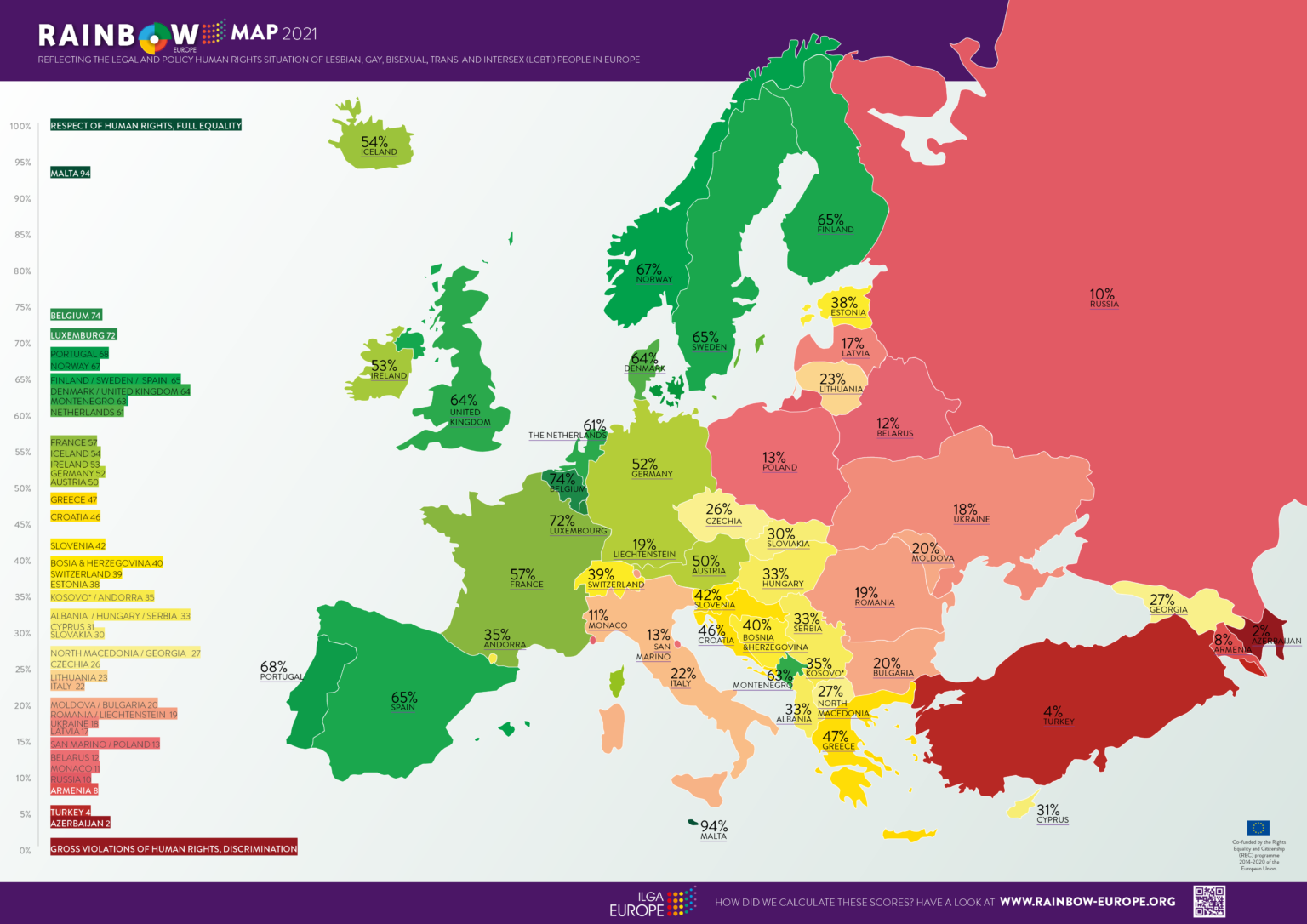
Every year, ILGA-Europe publishes our Rainbow Map, charting LGBTI rights in 49 European countries. But we’re not the only benchmarking map on the scene. From sexual orientation laws in the world to inclusive churches in Europe, these charts depict the state of LGBTI rights and more across the world.
If you are reading this blog, you may be familiar with ILGA-Europe’s Rainbow Map. Published every May, our Rainbow Europe Map and Index illustrates the legal and policy situation of LGBTI people in 49 European countries. It’s a benchmarking tool that has been consistently tracking the development , both positive and negative, of LGBTI rights over the past 12 years.
This year, our map revealed a widespread and almost complete stagnation on human rights of LGBTI people, marking an unprecedented year in its history, with almost no positive legislative change for LGBTI people in Europe. However, the map pointed towards a gap in the clouds. We are at a juncture when governments can actively choose the right way forward. At least 15 countries have plans and policy discussions already on the table, and therefore the map could look positively different next year.
While we endeavour to chart the legal and policy situation for LGBTI people in Europe with the Rainbow Map, one benchmarking map cannot not cover all aspects of LGBTI rights. Take a look at these LGBTI maps developed by other organisations.
TGEU’s Trans Rights Map
In their map, Transgender Europe illustrate the legal rights of trans people in 54 countries in Europe and Central Asia. This year, the organisation documented an alarming decline in trans rights, as progressive countries have slowed down in increasing protections, while moderate countries have often stalled progress altogether, and a growing number of countries are removing rights from trans people.
Legal Gender Recognition — Mental Health Diagnosis
Legal Gender Recognition — Sterilisation
Asylum
Protection against hate
Non-Discrimination
OII-Europe Intersex Good Practice Map
OII-Europe’s map features nine examples of good practices from the areas of policy action, data collection, monitoring, legal gender recognition, campaigning, anti-discrimination, legislation against hate speech/crime, and funding training and counselling. Check them out here!
ILGA World’s Sexual Orientation Laws Map
Every year, along with its State-Sponsored Homophobia report, ILGA World publishes maps of sexual orientation laws in the world. A useful tool for LGB human rights defenders, these maps expose the arbitrariness of persecutory laws, and starkly indicate the absence of positive law in most parts of the world.
Rainbow Index of Churches in Europe
The European Forum of LGBT Christian Groups and the Protestant Theological University in the Netherlands have collected and analysed data on the official position of churches in Europe on their national levels. You can navigate their map rating the inclusivity of churches by country in regard to LGBTI people.Report on inclusivity of Churches towards LGBTI personsReport commissioned by the European Forum of LGBT Christian Groups and produced by the Protestant Theological…inclusive-churches.eu
Call for Contributions: Violence and discrimination against LBTI women in sport submission to Council of Europe
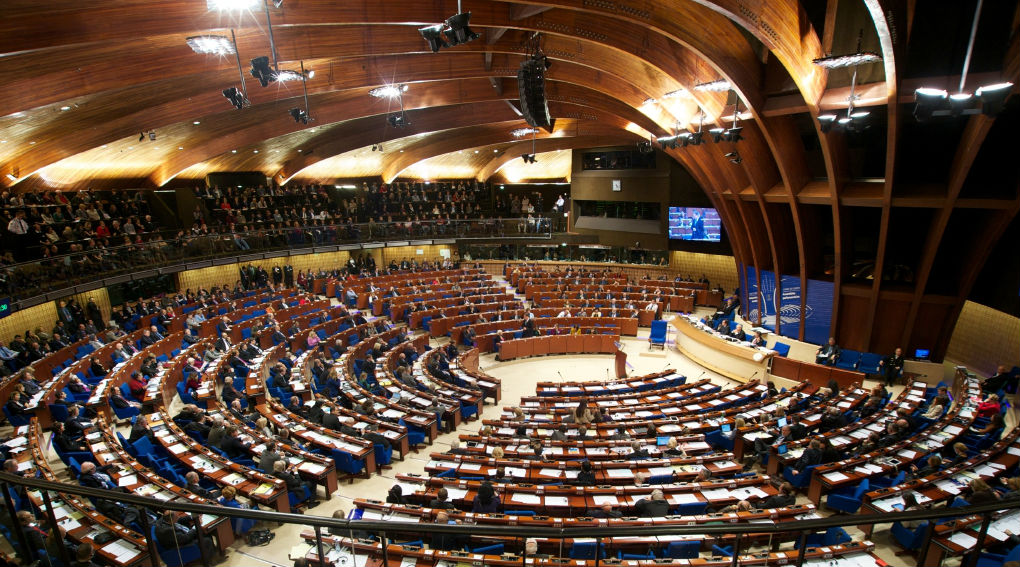
We, along with EL*C, TGEU, and OII Europe, are working to prepare a short submission to The Parliamentary Assembly of the Council of Europe on the specific needs and struggles of LBTI women in sports, and are looking for your inputs to this submission by 31 January.
The Parliamentary Assembly of the Council of Europe has been drawing attention to gender-based violence and discrimination for many years. The Assembly is now working on a report titled “The fight for a level playing field – ending discrimination against women in the world of sport”, which will result in a resolution to be adopted by the Assembly in 2021.
We are working to prepare a short submission on the specific needs and struggles of LBTI women in sports, and are looking for inputs to this submission
Inputs can be:
- focused at the local, regional, or national level, or presenting a full Council of Europe perspective
- focused on LBTI women as a whole or on specific groups within the LBTI communities
The format for submissions is informal, and can include individual testimonies, statistical data, or descriptions of situations and practices affecting these communities.
Inputs are due by 31 January 2021.
The questions on your email address and inclusion of reference to you or your organisation in the survey are mandatory; all other questions may be skipped if you choose.
Y. v France
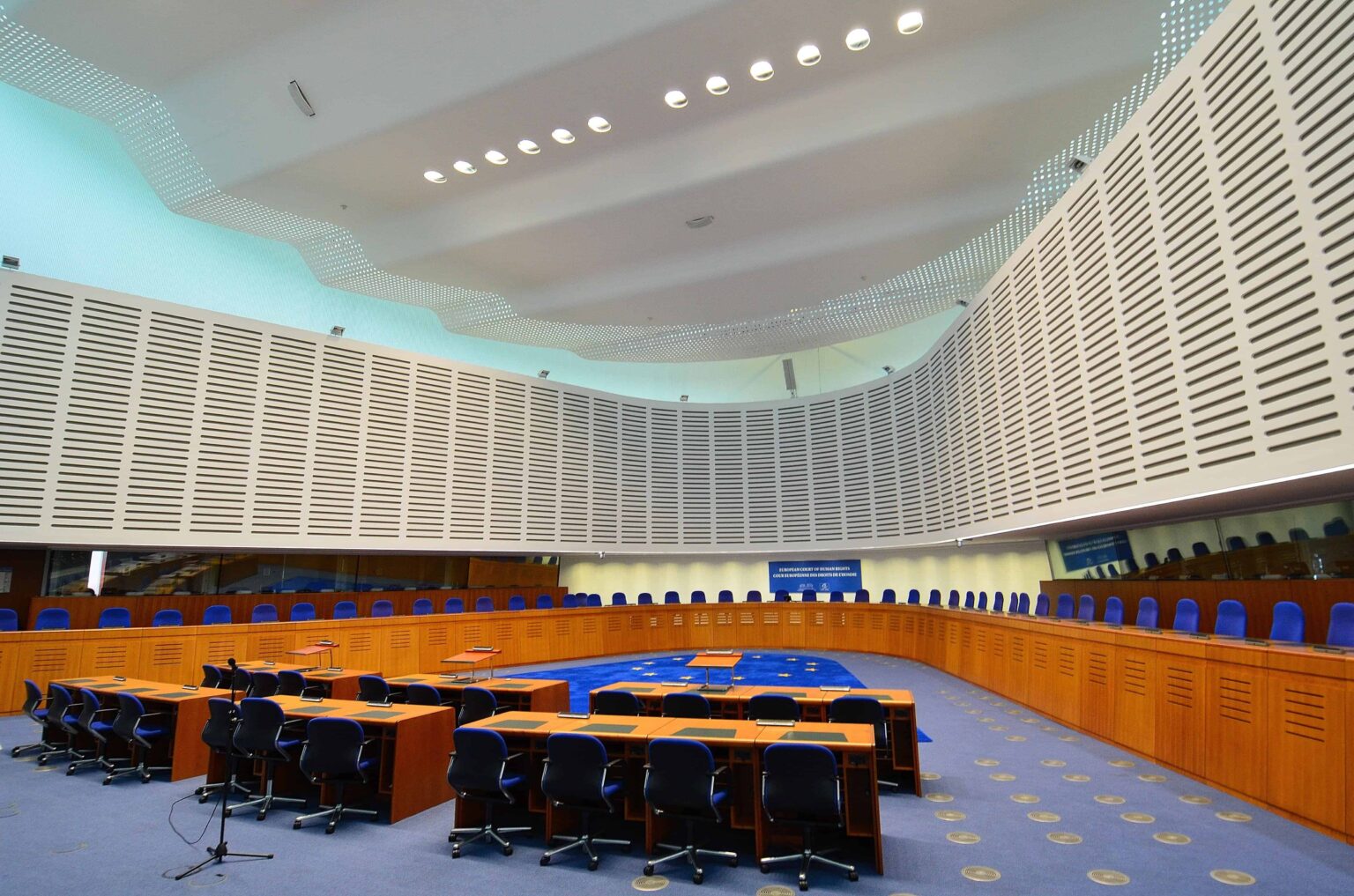
Recognition of non-binary identities.
Submitted jointly by ILGA-Europe, OII Europe, and C.I.A. (Collectif intersexes et allié-e-s).
Hungary rolls back legal protections, puts trans and intersex people at risk
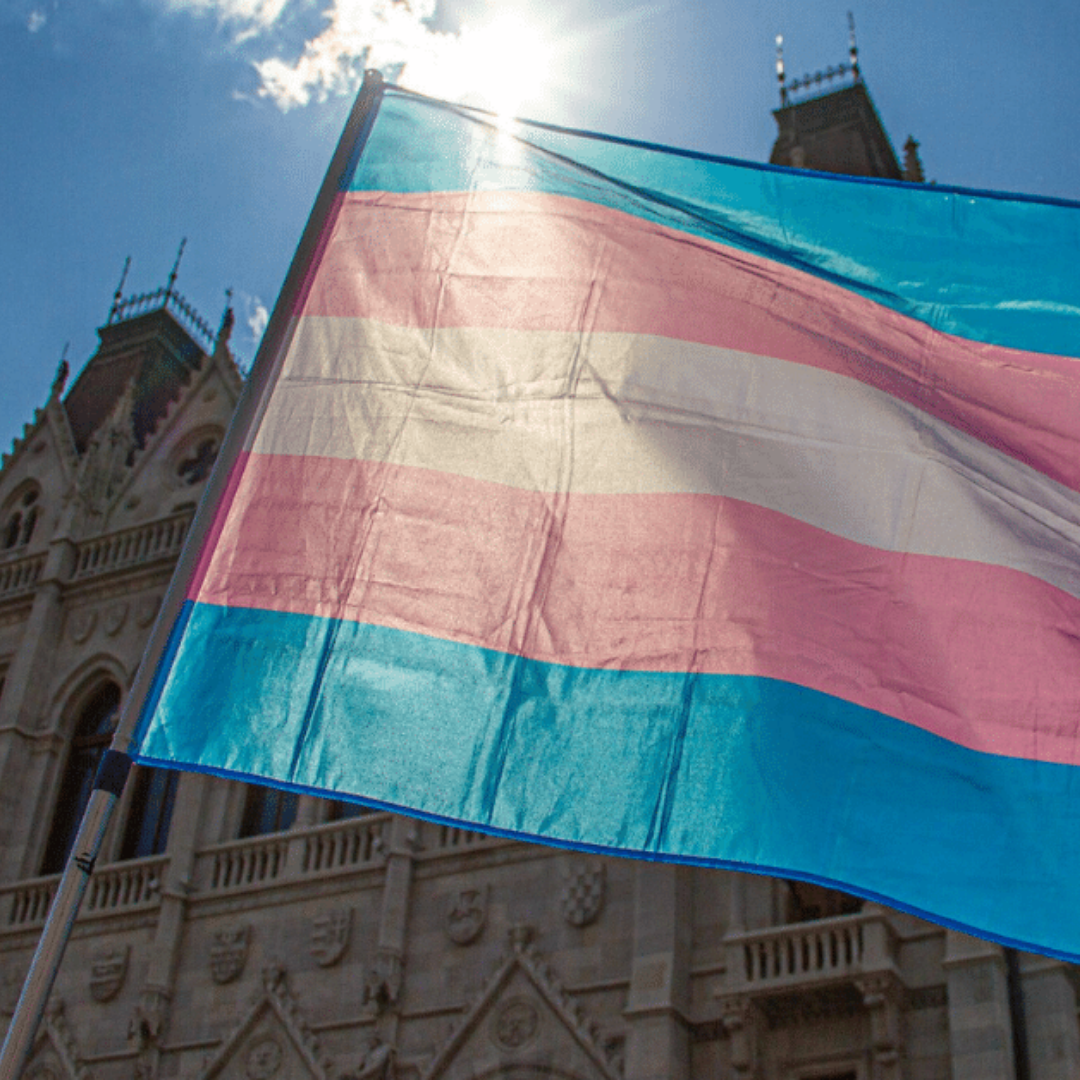
TGEU, ILGA-Europe, IGLYO, and OII Europe condemn decision of Hungarian Parliament to follow the government and restrict access to fundamental rights for trans and intersex people.
On 19 May 2020, following weeks of international outcry, the Hungarian Parliament voted 133 in favour, 57 opposed, to approve an omnibus bill, one article of which replaces the category of “sex” on the civil registry with one of “sex assigned at birth”.
The article within the omnibus bill, Article 33, amends the civil registry document, which is used as the basis for all legal identity documents for Hungarian citizens. Replacing the changeable characteristic of “sex” with an immutable one, “sex assigned at birth”, in practice Hungary has made legal gender recognition, the process by which trans and intersex people can bring their documents into alignment with their gender identity, impossible.
Before the proposal of this omnibus bill, the situation was bleak for trans and intersex Hungarians. According to the Second LGBTI Survey of the Fundamental Rights Agency, published last week, 76% of trans Hungarians believe that the Hungarian government “definitely does not effectively combat prejudice and intolerance against LGBTI people”, compared to an EU-28 average of only 38%. Additionally, 84% of trans respondents in Hungary reported that the main reason for increasing prejudice, intolerance, or violence in the country was “Negative stance and discourse by politicians and/or political parties”.
The international response was significant, with thousands of posts using the hashtag #drop33, referring to the specific article of the bill, as well as statements from the Council of Europe Commissioner for Human Rights, the European Parliament, the United Nations Special Procedures, and many more
Katrin Hugendubel, Advocacy Director for ILGA-Europe, said: “Legal gender recognition is the bedrock of access to equality and non-discrimination for trans and intersex people. Without it, these populations are subject to immense stigma, discrimination, harassment, and violence every time they use their identity documents – be it at the bank, when going to the doctor, when applying for a job, or even when applying for a cell phone contract.”
Dan Christian Ghattas, Executive Director of OII Europe, continues: “Intersex people can also need access to legal gender recognition, and are subject to discrimination and stigma when that is not possible. According to the FRA Survey, 21% of intersex Hungarians believe that barriers to legal gender recognition are their biggest obstacle.”
The European Court of Human Rights has consistently and clearly asserted that legal gender recognition falls within the right to private and family life in the European legal framework, specifically protected by Article 8 of the European Convention on Human Rights. ECtHR jurisprudence indicates that the personal characteristic of “sex” is one that, so long as it is publicly recorded by States, should be possible to change to protect the human rights of trans and intersex people to private and family life, to health, to found a family and marry, and to recognition before the law.
“We are dismayed by this decision to roll back established rights,” says Masen Davis, Interim Executive Director of Transgender Europe. “Trans and intersex Hungarians, as all people in Hungary, should have their human rights equally protected and without discrimination.”
For comment, contact: Ana Muñoz Padrós, ILGA-Europe: ana@ilga-europe.org, +32 493 35 60 55
Response to Hungarian Prime Minister Viktor Orbán regarding to Article 33 of the proposed Omnibus Bill, 2020
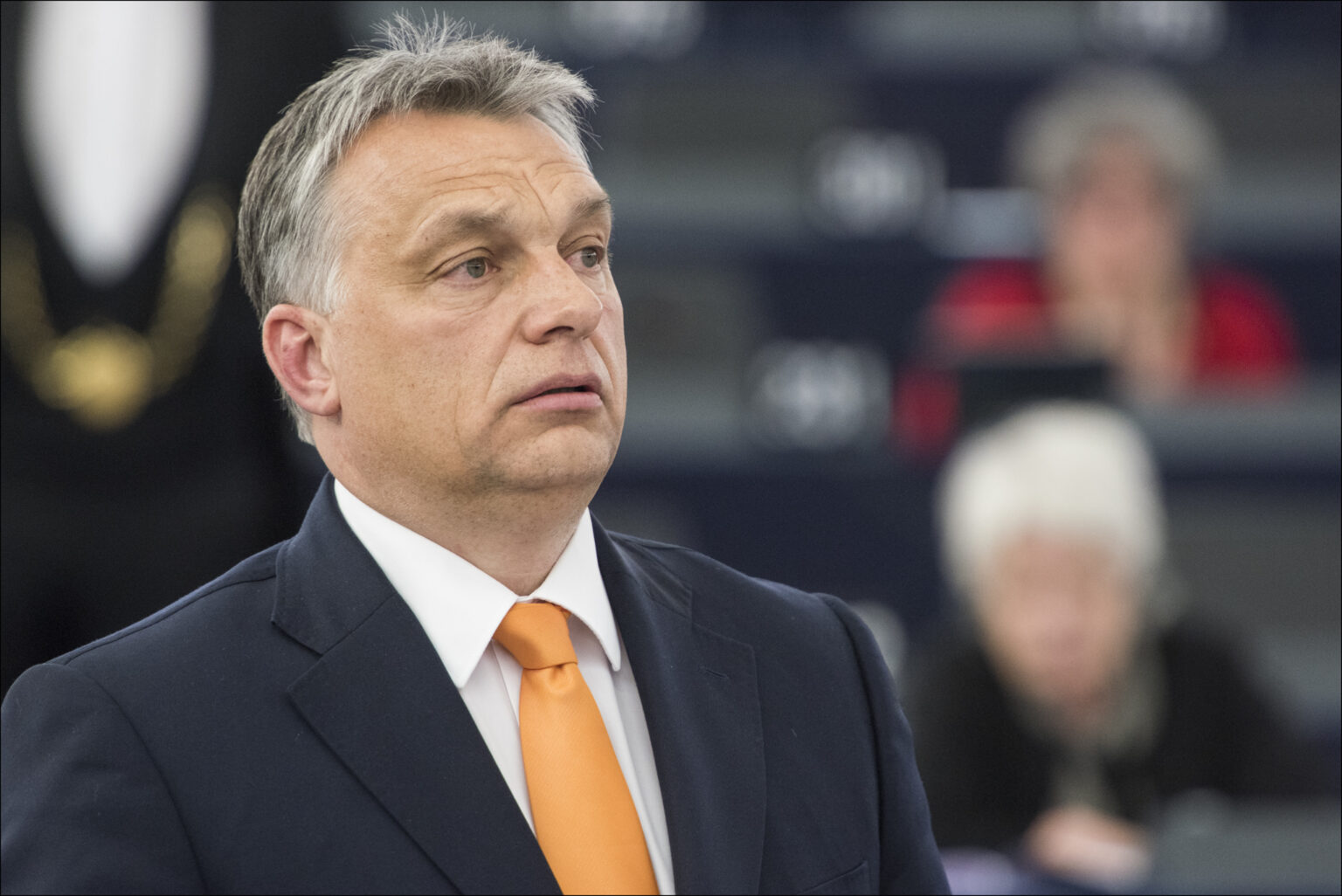
In response to Hungarian Prime Minister Viktor Orbán letter dated 5 May 2020, regarding to Article 33 of the proposed Omnibus Bill, 2020.
Dear Prime Minister Orbán,
Dear Deputy Secretary Schaller-Baross,
We write today to respond to your letter, dated 5 May 2020, to our organisations, of The European Region of the International Lesbian, Gay, Bisexual, Transgender and Intersex Association (ILGA-Europe), Organization Intersex International Europe (OII Europe), the regional umbrella organisation for intersex-led organisations in Europe, with members in more than 20 countries, and Transgender Europe (TGEU), in regards to Article 33 of the proposed omnibus bill of 2020, regarding reformulating the national registry to change the mutable category of “sex” to an immutable category of “sex at birth”.
As previously noted, we, along with our members in Hungary, strongly oppose the proposed amendment to the national registry, such that it will effectively make legal gender recognition for trans and intersex people impossible in Hungary, which contravenes EU and international human rights law and violates the well-established right to private and family life for trans and intersex Hungarians. Our previous letter, dated 24 April 2020, outlined the broad consensus among international human rights actors to this end.
We write today to address specific issues raised in your reply letter which are cause for concern. Firstly, we wish to address your reference to “a long-standing uncertainty in the interpretation of the law”. There is a clear understanding in European and international human rights law contexts that the mutable personal characteristic of “sex” is one that, so long as it is publicly recorded by States, should be possible to change to protect the human rights of trans and intersex people to private and family life, to health, to found a family and marry, and to recognition before the law.1 2 3 4 Legal gender recognition, the process by which one changes one’s sex marker in legal documents to reflect one’s gender identity, is clearly established in long-standing jurisprudence from the European Court of Human Rights,5 particularly when it comes to the fundamental right protected under Articles 8 and 12 of the European Convention of Human Rights.6 Replacing a mutable identity marker with an immutable one does not clarify an uncertainty in jurisprudence, but rather acts in direct contradiction of the Court to make legal gender recognition impossible, avoiding the State responsibility to protect and promote fundamental rights, in fact directly violating those fundamental rights. With this Article, Hungary will make protection of the fundamental human rights of its trans and intersex citizens impossible in practice and in law. Curtailment of fundamental rights cannot be the best available solution for addressing a legal “uncertainty”.
Additionally, in your reply letter, you assert that Article 33 of the omnibus bill in no way prevents individuals from “living according to his or her own identity and self-determination”. Unfortunately, this assertion is false. As is well-documented,7 8 access to legal gender recognition for trans and intersex people is intertwined with the protection of many of their human rights. Because the civil register is directly connected to all available identity documents in Hungary, this change not only fixes the sex marker in the registry, but in all other subordinate documents. This means in practice that trans and intersex people will be forced to live with documents that do not align with their gender identity and expression throughout their lifetimes, exposing them to increased discrimination, stigma, harassment, and violence, as well as to disparities in access to the rights to health, housing, education, employment, and to access goods and services without discrimination, as enshrined in the values of the European Union and the Council of Europe.
As ILGA-Europe, OII Europe and TGEU, we reaffirm our call on the Hungarian government to heed your responsibilities under the international human rights law framework, to engage in good faith reforms designed to protect the human rights of all Hungarian citizens including trans and intersex people, and thus to amend the omnibus bill to remove Article 33 prior to a vote in the full Parliament.
Kind regards,
Katrin Hugendubel
Advocacy Director, ILGA-Europe
1. e.g. Recommendation CM/Rec(2010)5 of the Committee of Ministers to member states on measures to combat discrimination on grounds of sexual orientation or gender identity, available from: https://search.coe.int/cm/Pages/result_details.aspx?ObjectID= 09000016805cf40a.
2. Parliamentary Assembly of the Council of Europe Resolution 2048 (2015), ‘Discrimination against trans people in Europe’.
3. Commissioner for Human Rights of the Council of Europe, Human Rights and Gender Identity (29 July 2009) CommDH/ IssuePaper(2009), available from: https://rm.coe.int/16806da753.
4. G v Australia, Communication No. 2172/2012 (CCPR/C/119/D/2172/2012) (UN HRC, 15 June 2017).
5. B v France [1993] 16 EHRR 1.
6. Goodwin v United Kingdom [2002] 35 EHRR 18.
7. Grant v United Kingdom [2006] ECHR 548.
8. Report of the Independent Expert on protection against violence and discrimination based on sexual orientation and gender identity (11 May 2018) UN Doc No. A/HRC/38/43.
What have happened?
– On 31 March, Trans Day of Visibility, the Hungarian government released a large bill consisting of many legislative proposals – one of these, Article 33, would make legal gender recognition impossible, massively curtailing the rights of trans and intersex citizens of Hungary.
– On 6 April, ILGA-Europe and TGEU released a statement calling on the Hungarian Parliament and the Parliament to drop Article 33 of a legislative omnibus bill.
– On 27 April, ILGA-Europe, OII-Europe, and TGEU sent a joint letter to Hungarian Prime Minister Viktor Orbán.- On 15 May, ILGA-Europe, OII-Europe, and TGEU sent a joint response to Hungarian Prime Minister Viktor Orbán’s letter.
– On 2 April, 22 Hungarian human rights and LGBT NGOs released a statement.
– On 2 April, the Council of Europe’s Commissioner for Human Rights shared a statement.
– On 14 April, the UN Independent Expert on protection against violence and discrimination based on sexual orientation and gender identity; the Special Rapporteur on the right of everyone to the enjoyment of the highest attainable standard of physical and mental health; the Special Rapporteur on the right to privacy and the Special Rapporteur on violence against women, its causes and consequences sent a letter to Hungarian government.
– On 20 April, the European Professional Association for Transgender Health (EPATH) and European Society for Sexual Medicine (ESSM), released a statement.
– On 15 April, 63 Members of the European Parliament sent a letter to Hungarian government.
– On 17 April, the Hungarian Psychological Association released a statement.
– On 17 April, the European Parliament passed a resolution.
– On 17 April, the UN High Commissioner on Human Rights referred explicitly to the bill as bad practice.- Transvanilla Association and All Out has collected over 24,000 signatures for a petition against the Article 33.
– You can SUPPORT the #Drop 33 campaign on Twitter, Instagram, or TikTok.- A vote in Parliament is expected on 19 May.
What we can learn from 15 brave stories of real European intersex lives

“Sometimes it is necessary to speak clearly from a very personal or intimate point of view,” says intersex activist Ins A Kromminga, co-founder of OII Europe and illustrator of ‘#MyIntersexStory: Personal accounts by intersex people living in Europe’. The 15 beautifully illustrated, but often harrowing stories in this groundbreaking publication speak “a clear and frank language of things that are often hard to speak about”.
For intersex people, whose bodies are all too frequently referred to only in medical terms, there is great power in being able to tell their stories in their own words. This was one of the aims of ‘#MyIntersexStory: Personal accounts by intersex people living in Europe’, a book with 15 frank and unflinching testimonials, published this year by OII Europe.
Based in Berlin, OII Europe is the umbrella organisation of European human rights-based intersex organisations. It works for the full implementation of human rights, bodily integrity and self-determination for intersex people and is a member organisation of ILGA-Europe.
The illustrations by Ins A Kromminga in ‘#MyIntersexStory’ portray people who could be your neighbour, your friend, your co-worker, while at the same time showing that intersex people are resilient, strong and beautiful.
At the same time, the drawings are illustrative of a huge issue for intersex people that still remains over a quarter of a century since the first historic demonstration by intersex activists. Find out how in this powerful interview.
Hi, Ins. To begin with, tell us how the #MyIntersexStory project began?
The original idea came from a brochure we created within a project of a local and national organisation in Germany, at the time when the first study on feminising and masculinising surgeries on intersex children of the age 0–9 was published. The study showed that these intersex genital mutilations (IGM’s) continued, despite other claims from the medical field. We wanted to provide an additional resource to give the statistics in the study a human and relatable perspective.
In the brochure we deliberately refrained from reproducing medical and diagnostic descriptions to explain certain operations and diagnoses, and instead have intersex people describe what happened to them in their own words. The brochure contained short quotes by intersex people and their experiences of how the medicalisation had affected, and continued to affect, their lives, combined with colourful graphic representations of individuals in everyday situations.
The German brochure initialised the idea for a similar publication in English with a European scope of testimonials, which would include artwork that visually corresponded with the stories.
How did you creatively experience the process of illustrating such incredibly personal stories?
The process took quite a long time and changed several times in terms of how to approach the testimonials from an artistic standpoint. The project grew bigger over a period of almost three years of developing and finishing the final book. We included additional testimonials, and the images became much more intricate than originally intended.
The people who contributed to this project are incredibly brave and we thank each and every one of them for agreeing to share their stories. Without their willingness to put those stories on paper — which also includes reliving the experience of IGM to a certain extent — this book would not have been possible.
As an intersex activist and as a professionally trained visual artist, these two aspects in my life always competed with each other for time and attention, and the best moments for me are when I can combine the two. This was the case when I created the images for ‘#MyIntersexStory’. As I point out in the introduction, I did not want to ‘illustrate’ one specific person or story, but instead have the images show people who could be anyone in our society — a neighbour, a family member, an old friend from school. I also wanted to show that intersex people are resilient, strong and beautiful.
At the same time, and in a more subtle way, using illustrations also shows a remaining big issue for intersex people. The majority still live in the closet and are afraid (often with good reason) to show their faces and speak up in a society that continues to discriminate and pathologise intersex realities, and where legal protection is non-existent in most countries.
That’s why not one person in the images and stories is recognisable or identifiable. The personal accounts speak a clear and frank language of things that are often hard to talk about. They are very personal and subjective, but, as in the text in the book by Janik Bastien Charlebois points out, they are the forefront of intersex activism and precious and valuable forces in our fight for dignity.
I did not want to ‘illustrate’ one specific person or story, but instead have the images show people who could be anyone in our society — a neighbour, a family member, an old friend from school. I also wanted to show that intersex people are resilient, strong and beautiful.
Ins A Kromminga
In the introduction you write about stepping “out of invisibility”, but also “deciding on what and how much we want to share”. What obstacles does the intersex community face in finding the right balance between telling and keeping boundaries, which other communities may not face?
To share one’s personal account of being intersex can be difficult. There continues to be many misconceptions on what the term intersex means and who the people behind that word really are. And when people learn of the many ways one can be intersex, it quickly can become overwhelmingly complex, and at the same time boringly normal.
Since the issues intersex people experience often have to do with how our bodies are perceived by others, specifically the medicalisation of our variations of sex characteristics and the human rights violations they entail, things get very personal and private quickly. Therefore, as intersex activists we have developed a sensitive language to speak about our experiences without disclosing aspects that should remain every person’s individual choice to reveal. Sometimes it is necessary to speak clearly from a very personal or intimate point of view, but how much, or in what depth, everyone needs to decide for themselves, depending on the context. For example, I would speak differently with a close friend or partner about things than I would on a public panel.
Most of us have experienced such an intense level of taboo and stigmatisation, often from a very early age, that coming out can feel like liberation from a heavy blanket of silence and invisibility. The sheer need to communicate and put into words what otherwise had no concept or language, can lead to an urge to not holding back any details, in ways that might not always be good for ourselves or others. As intersex people we have to carefully re-learn what is necessary to talk about, and how much we want, or have to, share with the world.
Is the personal political?
Yes. Longer answer: the phrase that stems from the feminist and radical feminist movements is also true for intersex people. Fragmented and isolated under a medically prescribed taboo and the stigmatisation of bodily difference, every individual intersex person has to first do the archeology of their own story that lies buried under disinformation and silence.
The second step to realise that this very personal experience was not indeed as individual as it initially might have seemed, but instead is part of a systemic medical protocol that had spread globally by the end of the 1960’s. Intersex variations are still considered a disorder of sex development in the newest edition of the International Classification of Diseases (ICD-11), even though over 70 United Nation Treaty Bodies and many other human rights institutions have clearly identified and condemned the human rights violations and abuses intersex people face in most countries, which often happen within medical settings.
Intersex bodies, similarly to women’s bodies or the bodies of people with disabilities have been historically medicalised, objectified, ostracised and marginalised. We are all survivors of a heterosexist and patriarchial system that still does not want to loosen its grip and reflect and share the world with all human beings.
Fragmented and isolated under a medically prescribed taboo and the stigmatisation of bodily difference, every individual intersex person has to first do the archeology of their own story that lies buried under disinformation and silence.
What social change can be achieved through art and personal stories that cannot be achieved through advocacy work?
In the end we want to change our societies so that intersex people can enjoy their human rights just as every other person should be able to. In order to get there, there are many ways to inform, educate, raise awareness, advocate, consult and engage, and OII Europe believes in the benefit of using them in all their diversity.
In our eyes art and personal stories open other additional channels of empathy; they make people understand or relate on a more direct and emotional level. I think we will always need both, advocacy and legislation that will protect the rights of people, but also a change in culture, also through art, that speaks about the core of what it means to be human and how intersex people are part of humanity and our societies.
Some of the protagonists of the book are over 30, 40 and 50 and had surgical intervention when they were babies or children. Have the protocols in European health systems got better ever since? What has changed — or has not — for that to happen?
Since the first intersex people rallied in front of a medical conference in Boston 24 years ago, the medical field has adjusted and changed its approaches. Unfortunately their adjustments, with a few exceptions, mainly focus on reframing the issue and changing terminologies, not stopping the interventions of unconsented cosmetic surgeries and other medical treatments, as recent studies from Germany show.
Those interventions are often based on social constructs and biases. Regarding people born with variations of sex characteristics, the sole reason non-vital medical interventions, i.e. cosmetic feminising and masculinising operations, are performed is to make us look and function as (heterosexual) boys and girls, and later as men and women who will engage in heterosexual classical penetrative (penis-in-vagina) intercourse.
That this is not working should be clear after almost 30 years of criticism by intersex activists. The norm of the heterosexual and sex-binary human is one we have to overcome. Our world is much more colourful and diverse, and we all need to cherish it, not fear or regulate it.
Some words that are repeated across the 15 stories are very strong: “object of science”, “lack of information”, “medical violence”, “mutilation”, “body betrayal”. What words would you like to be shared by the intersex community instead of these?
Integrity, dignity, truth, intact intersex generations, autonomy, decency, informed choice, intersex-centered health care, celebrating diversity, intersex is beautiful, loving our bodies, exploring our full potentials, hermpower, hermlove, hermhugs, too cute to be binary… I shall collect more of those!
How did you first get involved with OII Europe?
I am one of the co-founders of OII Europe, which was founded during the Second International Intersex Forum in Stockholm, Sweden on Human Rights Day 2012 (December 10) as a network of national European intersex-led organisations. After our official founding as a charitable non-profit organisation in 2015, I served as part of the executive board for several years. I have been a member of the staff since January 2019, working as the Awareness Raising & Campaigns Officer, where I can integrate both my activist and artistic backgrounds.
What are the goals of OII Europe in the short and mid-term?
Our main goals are based on the Malta Declaration, formulated at the 3rd International Intersex Forum 2013. We work for the full implementation of human rights, bodily integrity and self-determination for intersex people, and the main short-term goal would be the legal prohibition of non-consensual medical and psychological treatment.
Something we already work on, but which could be considered ongoing or a mid-term goal, is the promotion of self-awareness, visibility and recognition of intersex people and for the full protection against discrimination and the adoption of “sex characteristics” as a protective ground.
In general we are working on supporting and informing stakeholders, multipliers, allies and educating the society at large on intersex issues from a human rights perspective.
How to be a great intersex ally

Even within the LGBTI community, intersex people continue to be overlooked, and that’s something we urgently need to change. Here are our top tips for getting on the right page and supporting the human rights of intersex people!
In a world where the overwhelming majority of people and governments only know and accept two sexes (‘male’ and ‘female’) the existence of intersex people and their bodies is barely recognised. Instead, healthy intersex bodies are considered to be a medical problem that needs to be fixed by surgical, hormonal, other medical and sometimes psychological means. Intersex people face human rights violations, including having their bodily integrity compromised as infants, when doctors decide to ‘fix’ them.
“I have to say that I exist, I have to say that I’m intersex and I have to do things in order for other intersex people and future generations not to have to go through what I’ve been through,” Audrey Aegerter of InterAction Suisse told us in an inspiring Voices of ILGA-Europe interview.
Today, thanks to the brave and dedicated work of intersex activists like Audrey across Europe, the silence and lack of awareness that previously surrounded intersex issues have been replaced by increased interest from NGO allies and policy-makers, more media coverage and strong political statements.
When LGBTI activists find out about the life experiences of the intersex people in our community, often their first reaction is to ask: How can I become an intersex ally? What can I do?
There are some easy things that you can do that really help:
1. Talk about it!
Lack of knowledge is one of the key reasons for the human rights violations and the discrimination intersex people face. By spreading the word about the existence of intersex people and the human rights violations and discrimination they face, you work towards making society a safer and more welcoming space for intersex people. This includes making intersex people’s existence visible by mainstreaming intersex issues in all areas of life and politics. So, read up on the experience of intersex people and start some conversations!
2. Create a safe space for intersex people
It is very likely that you already have intersex people in your organisation, at your work place or even amongst your friends and family; therefore creating a safe space for them to come out is crucial. Those individuals might not feel safe enough to come out yet, but if they know they are in a space of acceptance, they just might share their identity with you. Let them know it’s okay by sharing your recognition of the issues intersex people face.
3. Integrate the ‘I’ into your work
Inform your colleagues and the members of your networks on intersex human rights issues. As a first step, you might consider asking intersex activists if they can provide training or advice for you. This will help you better understand intersex issues, the challenges intersex organisations face and how you can effectively work for the improvement of intersex people’s situation in your country.
4. Support intersex activists and NGOs
Being visibly intersex is still a very difficult task. Despite this fact, the number of intersex activists and organisations is growing but they all work with almost none or very limited funding. Becoming an intersex activist most often means having to forfeit the chance of having a regular income. Due to the lack of funding, you are expected to provide professional and highly specialised expertise for free. Helping intersex activists and NGOs financially to perform their task is key to ensuring they can share the unique expertise they have.
5. Help create new alliances
Work with intersex NGOs and help them to create new alliances. Intersex human rights organisations are the best contact point for getting up-to-date information on the human rights violations faced by intersex people. They have long-term experience in advocating for intersex human rights.
6. Be a promoter
Use your social media to promote the statements of international human rights bodies on intersex. For instance, encouraging all relevant stakeholders to implement the recommendations of the Council of Europe’s Human Rights Commissioner will be very beneficial.
The inspirational voices of LGBTI activism
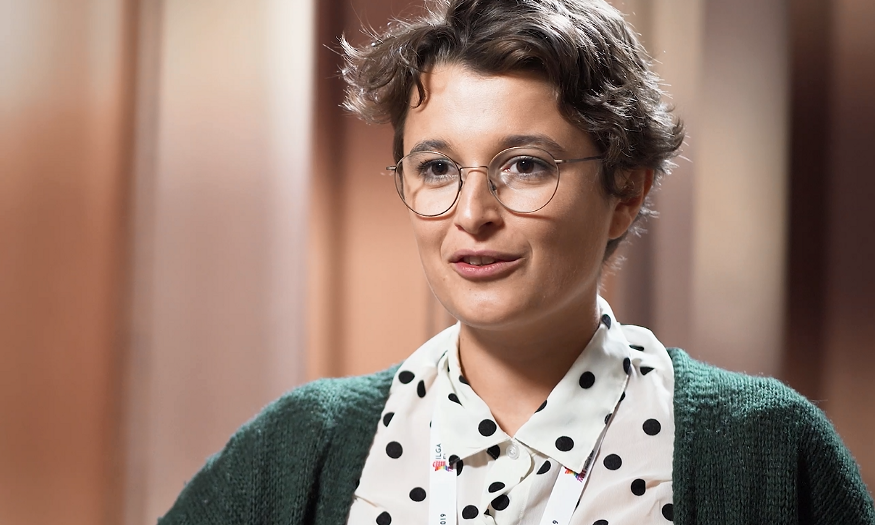
Watch our video interview with passionate intersex activist, Audrey Aegerter of InterAction Suisse, the first of our ILGA-Europe members from across Europe and Central Asia who talked to us about the great work they’re doing.
A native of Switzerland, Audrey is the first interviewee in our brand new Voices of ILGA-Europe project, in which members of ILGA-Europe from across Europe and Central Asia tell us about their journeys to the frontlines of LGBTI activism, the highs and the lows of their activist lives, the challenges facing them now, and how they have been supported by the work we do for and on behalf of our 600-plus member organisations.
Filmed at our annual conference in Prague last October, Audrey came to activism through an encounter with a doctor that stirred some deeply held anger and provided a moment of absolute clarity about how intersex people are made invisible.
“The doctor told me that my sister should do a genetic test to see if she has the genetics of my variation, so that if she’s pregnant she can take the good decision to abort,” Audrey remembers. “And it was the first time I realised that the medical settings and the society tries to make us invisible, and actually make us not exist anymore, through mutilation, but also through selective abortion.”
“I came out of this appointment and I was angry. Angry, angry, angry! It was like a switch in my head and I was like, now I can’t live hidden anymore. I have to say that I exist, I have to say that I’m intersex and I have to do things in order for other intersex people and future generations not to have to go through what I’ve been through.”
Audrey Aegerter
Harnessing her anger for good, Audrey set up ILGA-Europe member organisation, InterAction Suisse, which advocates for and supports intersex people in Switzerland.
“We are focusing on three main areas,” Audrey says. “First of all community building, because in Switzerland there is no intersex community, really, so we are trying to reach as many intersex people as possible, to have friends and people who share the same interests.
“We are also doing awareness-raising, by doing workshops in different organisations, or in the medical setting, or in schools, so that everyone who is working with intersex people or children, they know our interests or needs, and what intersex is, because this is a big issue. Many people don’t know we even exist.”
InterAction Suisse has been successful at advocating for intersex people in the context of the medical arena. “The most important issue for my organisation is to stop intersex genital mutilations and treatments in hospitals and to have this in a law where it stipulates that it is forbidden and that doctors cannot act the way they act now. We have participated in a motion in Switzerland for the Canton de Genéve to forbid intersex interventions in Geneva and we’ve been heard by the Council for Human Rights in Geneva. And they have voted on and accepted unanimously to have a law to forbid intersex genital mutilations in Geneva, and now we’re waiting to see the outcome of this and hoping to have something good.”
After setting up InterAction Suisse, Audrey was able to access the services and support of ILGA-Europe, which she says was pivotal to the organisation’s development.
“I participated in a workshop on public campaigns for intersex human rights at the ILGA-Europe office in Brussels, in June 2018. I think this was very important for us because through the toolkits we received we managed to have a clear idea on how to frame our message, on how to discuss the topic. And then I participated in two ILGA-Europe conferences, in Brussels and Prague, and to see all the excitement and all the people working together and to see all the atmosphere, and the ideas and the capacity, I find it very empowering and very helpful. It’s a way of motivation for me as an activist, and also for InterAction.”
We are hugely impressed and inspired by Audrey’s passion and work, and we look forward to further supporting and enhancing the work of InterAction Suisse. Our next Voices of ILGA-Europe video interview will be out soon, and we look forward to sharing lots more inspirational LGBTI activist stories with you!
Monumental shift in global health for trans and gender diverse people

Today, after nearly a decade of efforts from trans and gender diverse activists and organisations, and their allies, the World Health Assembly approved the newest update to the International Classification of Diseases (11th Revision; ICD-11), which depsychopathologises (i.e. removes assertions of mental disease or disorder) trans and gender diverse people1).
Micah Grzywnowicz, Co-Chair of the Executive Board of ILGA-Europe, says, “ICD-11 represents a monumental shift in the global health for trans and gender diverse people. In previous revisions of ICD from the time that trans-related diagnoses were added in 1965 (8th Revision), these diagnoses were listed as either ‘Sexual deviations’ or ‘Mental and behavioural disorders’. The 11th revision accomplishes several steps at once, including the depsychopathologisation of trans and gender diverse identities.”
Firstly, the old diagnoses, predicated on the understanding that trans identities were mental disorders in themselves, have been deleted entirely. This is extremely important, as both the old category names and their corresponding content represent a history laden with struggle, oppression, forced medicalisation, stigma, and marginalisation experienced by trans and gender diverse people in the context of healthcare.
Second, a new chapter in the 11th Revision, “Conditions related to sexual health”, includes new trans-related diagnoses, as well as codes related to sexual and reproductive health. The new chapter is non-pathologising (i.e. it does not label its categories as “disorders” automatically). This new classification approach indicates a belief from the World Health Organisation that trans and gender diverse people are not inherently “disordered”, nor that their identities as such are related to their mental wellness.
Finally, the new categories, collectively “Gender incongruence”, are defined in ways that do not imply that the assignment of this category corresponds with a disease or a disorder. These new categories can only be assigned when the trans or gender diverse person themselves indicates distress with their body (also known as dysphoria) and are in need of medical interventions such as hormones, laser hair removal, or surgeries to address these feelings.
There is, however, a very long way to go on several fronts2. Most alarmingly, as Dan Christian Ghattas, Executive Director of OII Europe notes, “ICD-11 cements the pathologistion of intersex people by introducing harmful language such as ‘disorders of sex development’, incorporating supporting and explanatory materials that are associated with human rights violations, and failing to take steps to address or eliminate human rights violations against intersex people in medical settings.” See the ICD-11 press release jointly prepared by intersex organisations worldwide for more information.
Additionally, ICD-11 introduces a problematic code: “Gender incongruence in childhood”. Trans and gender diverse children who have not yet experienced the onset of puberty do not need medical interventions, but instead only love, support, information, and access to counselling. The category instead serves to pathologise gender curiousity, creativity, and exploration in children.
Finally, the global approval of ICD-11 represents just one step in a list of many, the next of which is national-level implementation of the Revision. National-level policymakers and stakeholders must work together to ensure the full implementation of the 11th Revision and full coverage of all medical procedures associated with the new categories within health insurance systems.
1. ICD-11 was announced by the WHO Executive Board in June 2018, but still needed to be ratified by the Assembly to go into force.
2. For detailed information on next steps, please refer to the work of the global coordinating group on depathologisation, hosted by GATE.